Schneider Electric USA GWA242F Industrial Access Point User Manual
Schneider Electric USA Industrial Access Point
User Manual

www.schneider-electric.com
S1A31526.00
ConneXium WiFi
TCSG, TCSN
User Installation Manual
TCSGWA272, TCSNWA271, TCSNWA2A1, TCSNWA271F,
TCSGWA242, TCSGWC241, TCSGWA242F, TCSNWA241,
TCSNWA241F
8/2010
S1A31526 - Draft - 8/2010 – 19.8.10
Contents
About this Manual 6
Key 9
Safety instructions 10
1 System Planning 18
1.1 WiFi devices 18
1.1.1 WiFi access points 18
1.1.2 WiFi clients 19
1.2 Frequency Bands 19
1.2.1 The ISM Bands 19
1.2.2 Government Regulation of the ISM Bands 22
1.2.3 Anticipating Radio Wave Behavior 22
2 Device description 25
2.1 Properties and functions 25
2.1.1 IP67 types 26
2.1.2 Rail / IP40 types 26
2.1.3 802.11 a/b/g/h/i types 26
2.1.4 802.11 a/b/g/h/i/n types 26
2.2 Interfaces and control elements 28
2.2.1 TCSGWA272 28
2.2.2 TCSNWA271, TCSNWA271F and TCSNWA2A1 29
2.2.3 TCSGWA242 and TCSGWA242F 30
2.2.4 TCSGWC241 31
2.2.5 TCSNWA241 and TCSNWA241F 32
2.3 Device models 33
2.3.1 TCSGWA272 devices 33
2.3.2 TCSGWA242.../TCSGWC241 devices 33
2.3.3 TCSNWA271... and TCSNWA241... devices 34
3 Assembly and start-up 35
3.1 Safety instructions 35
3.2 Overview of installation 35
3.3 Unpacking and checking 36
3.4 Assembling components (IP67 types) 36
3.5 Selecting the location for mounting/
setting up 37
4S1A31526 - Draft
- 8/2010
3.6 Mounting outdoors (IP67 types) 37
3.6.1 Lightning protection 38
3.6.2 Pole mounting 38
3.7 DIN rail mounting (Rail-/IP40 types) 39
3.8 Flat surface mounting 39
3.8.1 IP67 types 39
3.9 Selecting the Right Antenna 40
3.9.1 Antenna Characterisitics 40
3.9.2 Omnidirectional Antennas 40
3.9.3 Directional Antennas 41
3.9.4 Leaky Cable 42
3.10 Mounting/connecting external antennas 42
3.10.1 Connectors for external antennas on IP67 types 42
3.10.2 Connectors for external antennas on Rail/IP40 types 44
3.10.3 Mounting external antennas 45
3.11 Connecting LAN and WLAN connectors 45
3.11.1 IP67 types 45
3.11.2 Rail / IP40 types 46
3.12 Grounding 46
3.12.1 IP67 types 46
3.12.2 Rail / IP40 types 47
3.13 Connecting the supply voltage 47
3.13.1 5-pin M12 connector (IP67 types) 48
3.13.2 4-pin terminal block (Rail-/IP40 types) 48
3.13.3 Power over Ethernet (PoE) -
power supply via the LAN cable 49
3.14 Connecting the data lines 49
3.14.1 10/100 Mbit/s twisted pair connection 49
3.14.2 10/100 Mbit/s twisted pair connection 51
3.15 Installing the TCSNWA2A1 housing cover 52
3.16 Startup procedure 54
3.16.1 IP67 types 54
3.16.2 Rail / IP40 types 54
3.17 Finding and configuring devices 55
3.18 Installing external antennas 55
3.19 Display elements 57
3.20 Operation element (reset button) 60
3.20.1 Functions 61
S1A31526 - Draft
- 8/2010 5
3.20.2 IP67 types 61
3.20.3 Rail / IP40 types 61
3.21 Basic set-up 63
3.22 Disassembly 64
4 Technical data 65
6S1A31526 - Draft
- 8/2010
About this Manual
Validity Note
The data and illustrations found in this book are not binding. We reserve the
right to modify our products in line with our policy of continuous product
development. The information in this document is subject to change without
notice and should not be construed as a commitment by Schneider Electric.
Product Related Information
Schneider Electric assumes no responsibility for any errors that may appear
in this document. If you have any suggestions for improvements or
amendments or have found errors in this publication, please notify us.
No part of this document may be reproduced in any form or by any means,
electronic or mechanical, including photocopying, without express written
permission of Schneider Electric.
All pertinent state, regional, and local safety regulations must be observed
when installing and using this product. For reasons of safety and to ensure
compliance with documented system data, only the manufacturer should
perform repairs to components.
When devices are used for applications with technical safety requirements,
please follow the relevant instructions.
Failure to use Schneider Electric software or approved software with our
hardware products may result in improper operating results.
Failure to observe this product related warning can result in injury or
equipment damage.
User Comments
We welcome your comments about this document. You can reach us by
e-mail at techpub@schneider-electric.com
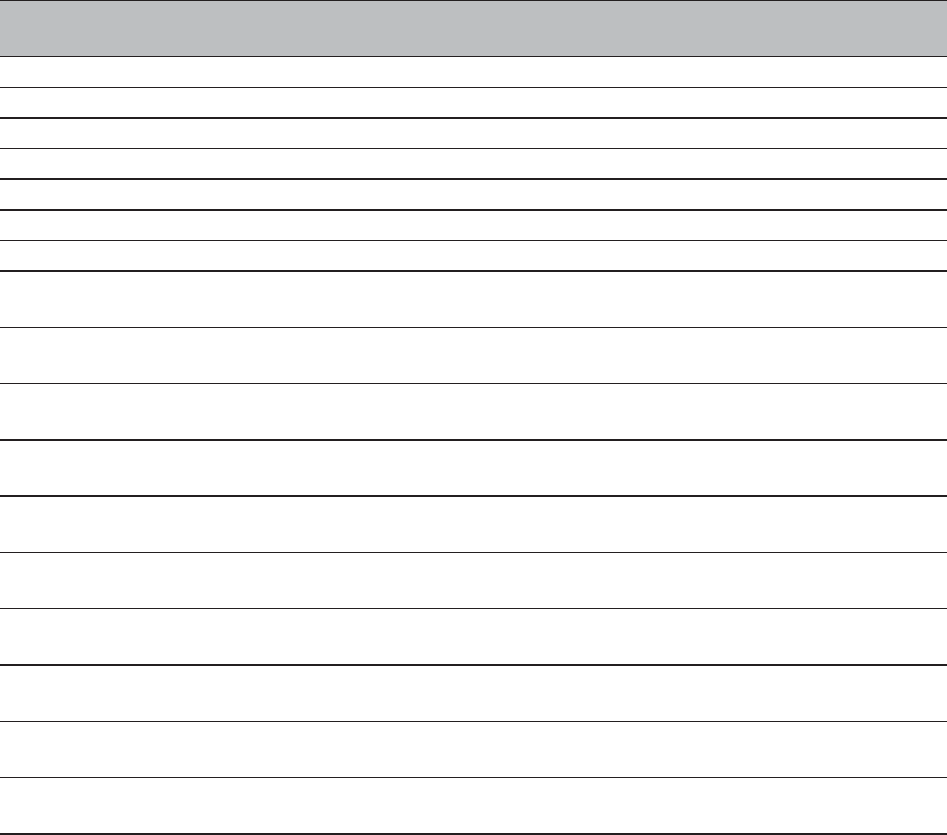
S1A31526 - Draft
- 8/2010 7
Related Documents
Note: The Glossary is located in the TSCG, TSCN Configuration and
Administration Guide.
Title of Documentation Reference-
Number
ConneXium WiFi TCSG,TSCN Configuration and Administration Guide S1A31559
ConneXium WiFi TCSG,TCSN Operation and Maintenance Guide S1A31553
ConneXium WiFi TCSG,TCSN Quick Start Guide S1A31547
ConneXium WiFi TCSG, TCSN User Installation Guide S1A31526
ConneXium WiFi TCSG,TCSN Command Line Interface S1A31521
ConneXium WiFi TCSG, TCSN Outdoor Installation Guide S1A31531
ConneXium WiFi TCSG, TSCN Antenna Guide S1A56438
ConneXium WiFi 2.4 GHz Omni Directional Antenna -
TCSWAB2O Mounting Instructions
S1A50472
ConneXium WiFi 5 GHz Omni Directional Antenna -
TCSWAB5O Mounting Instructions
S1A50473
ConneXium WiFi Dual band Hemispherical Antenna -
TCSWABDH Mounting Instructions
S1A50474
ConneXium WiFi 2.4 GHz Directional Antenna -
TCSWAB2D Mounting Instructions
S1A50475
ConneXium WiFi 5 GHz Medium & Very Directional Antennas -
TCSWAB5x Mounting Instructions
S1A50476
ConneXium WiFi 2.4 GHz, 5 GHz Dual Slant , MiMo 11n Antennas -
TCSWABxS, TCSAB5DN Mounting Instructions
S1A50480
ConneXium WiFi Dual band Omni Directional 11n Antenna -
TCSWABDON Mounting Instruction
S1A50481
ConneXium WiFi Over Voltage Protector - Antenna -
TCSWABP Mounting Instructions
S1A50482
ConneXium WiFi Over Voltage Protector - LAN/PoE -
TCSWABP68 Mounting Instructions
S1A50483
ConneXium WiFi Memory Card IP40,IP67 and ATEX Modules -
TCSWAMCD, TCSWAMC67
S1A50484
8S1A31526 - Draft
- 8/2010
TCSG,TSCN Configuration and Administration Guide
The ”TCSG,TSCN Configuration and Administration Guide” contains
information about creating basic configurations for specific use cases and
detailed information regarding all the configurable parameters.
TCSG,TCSN Operation and Maintenance Guide
The ”TCSG,TCSN Operation and Maintenance Guide” contains information
about using the LANConfig, Webconfig and local area LANmonitor software
tools to operate and maintain ConneXium WiFi Devices.
TCSG,TCSN Quick Start Guide
The ”TCSG,TCSN Quick Start Guide” contains information about how to get
started with a new out of the box Connexium WiFi Device.
TCSG,TCSN User Installation Guide
The “TCSG, TCSN User Installation Guide” contains a device description,
safety instructions, a description of the display, and the other information that
you need to install the device.
TCSG,TCSN Command Line Interface Reference Manual
The "TCSG, TCSN Command Line Interface Reference Manual” contains
detailed information on using the Command Line Interface to operate the
individual functions of the device.
TCSG, TCSN Outdoor Installation Guide
The "TCSG, TCSN Outdoor Installation Guide" contains basic information
about planing, mounting and installing wireless LAN systems in an outdoor
environment.
Antenna Mounting Instruction
The antenna mounting instructions contain information you need to mount
the antennas/accessories.
TCSG, TCSN Antenna Guide
The "TCSG, TCSN Antenna Guide" contains an overview of the available
antennas, over voltage protectors, adaptor cable and antenna cables. This
guide helps you to find the suitable accessories for your wireless LAN
application.

S1A31526 - Draft
- 8/2010 9
Key
The symbols used in this manual have the following meanings:
XListing
Work step
Subheading
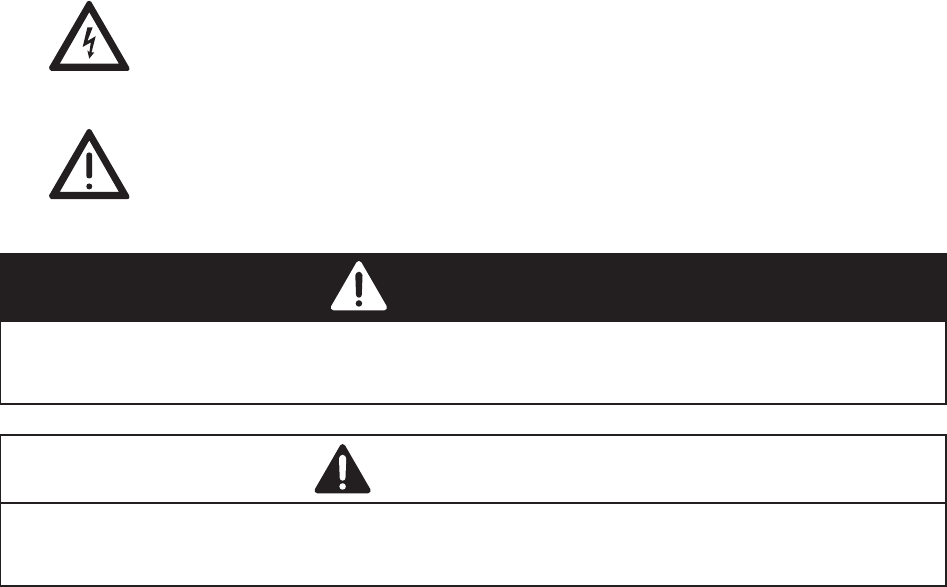
10 S1A31526 - Draft
- 8/2010
Safety instructions
Important Information
Notice: Read these instructions carefully, and look at the equipment to
become familiar with the device before trying to install, operate, or
maintain it. The following special messages may appear throughout this
documentation or on the equipment to warn of potential hazards or to call
attention to information that clarifies or simplifies a procedure.
The addition of this symbol to a Danger or Warning safety label
indicates that an electrical hazard exists, which will result in
personal injury if the instructions are not followed.
This is the safety alert symbol. It is used to alert you to potential
personal injury hazards. Obey all safety messages that follow
this symbol to avoid possible injury or death.
PLEASE NOTE: Electrical equipment should be installed, operated,
serviced, and maintained only by qualified personnel.
No responsibility is assumed by Schneider Electric for any consequences
arising out of the use of this material.
© 2010 Schneider Electric. All Rights Reserved.
Usage
The device may only be employed for the purposes described in the
catalog, technical description, and manuals.
Supply voltage
Apply supply voltage to the device if terminal blocks are wired and
installed correctly as described in chapter “Connecting the supply
voltage“ on page 47.
DANGER
DANGER indicates an imminently hazardous situation which, if not
avoided, will result in death or serious injury.
WARNING
WARNING indicates a potentially hazardous situation which, if not avoided,
can result in death or serious injury.
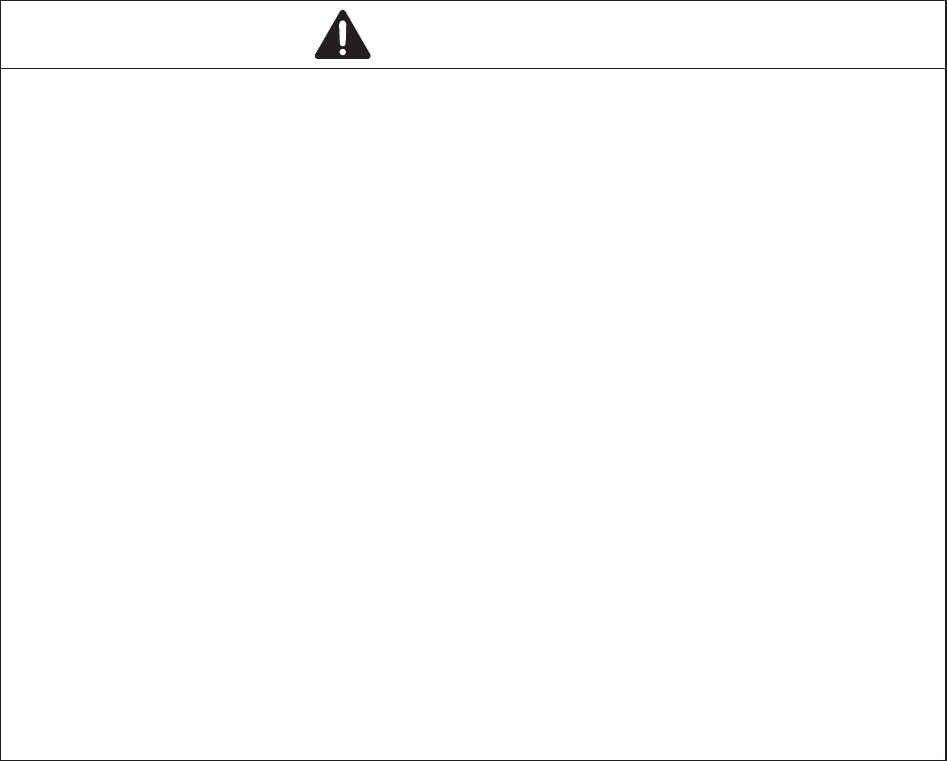
S1A31526 - Draft
- 8/2010 11
The devices are designed for operation with extra-low voltage (SELV).
Accordingly, SELV circuits with voltage restrictions in accordance with
IEC/EN 60950-1 may be connected to the supply voltage connectors.
Use undamaged parts.
For TCSNWA241 and TCSNWA241F: The DC power supply line
should not exceed 3 meters (118.11 inches).
Use a cable cross-section of at least 1.0 mm² (for North America, AWG
16) for the current conductor at the voltage input.
Relevant for North America: For use in Class 2 circuits.
Only use copper wire/conductors of class 1, 75 °C (167 °F).
Relevant for North America: For use in Class 2 circuits.
The device may only be connected to a supply voltage of class 2 that
fulfills the requirements of the National Electrical Code, Table 11(b). If
the voltage is being supplied redundantly (two different voltage
sources), the combined supply voltages must fulfill the requirements of
the National Electrical Code, Table 11(b).
WARNING
LOSS OF CONTROL
Berücksichtigen Sie bei der Planung der Steuerungsschemata mögliche
Ausfälle der Steuerungspfade. Stellen Sie dabei für bestimmte kritische
Steuerungsfunktionen entsprechende Mittel bereit, um während und nach
einem Pfadausfall einen sicheren Zustand zu gewährleisten. Beispiele für
kritische Steuerungsfunktionen sind Notfall-Stopp, Überfahr-Stopp,
Stromausfall und Neustart.
Für kritische Steuerungsfunktionen müssen getrennte oder redundante
Steuerungspfade verfügbar sein.
Systemsteuerungspfade können Datenlinks enthalten. Berücksichtigen Sie
deshalb die Auswirkungen von unvorhergesehenen
Übertragungsverzögerungen oder -ausfällen der Links.
Beachten Sie die Unfallverhütungsvorschriften und die lokalen
Sicherheitsrichtlinien. a
Überprüfen Sie jede Implementierung dieser Anlage einzeln gründlich auf
Funktionsfähigkeit und Betriebssicherheit, bevor Sie sie in Betrieb nehmen.
Failure to follow these instructions can result in death, serious injury,
or equipment damage.
a. Weitere Informationen finden Sie in den Richtlinien NEMA ICS 1.1 (neueste Ausgabe),
„Safety Guidelines for the Application, Installation, and Maintenance of Solid State Control“,
sowie NEMA ICS 7.1 (neueste Ausgabe),„Safety Standards for Construction and Guide for
Selection, Installation and Operation of Adjustable-Speed Drive Systems“, bzw. in den
entsprechenden vor Ort geltenden Bestimmungen.
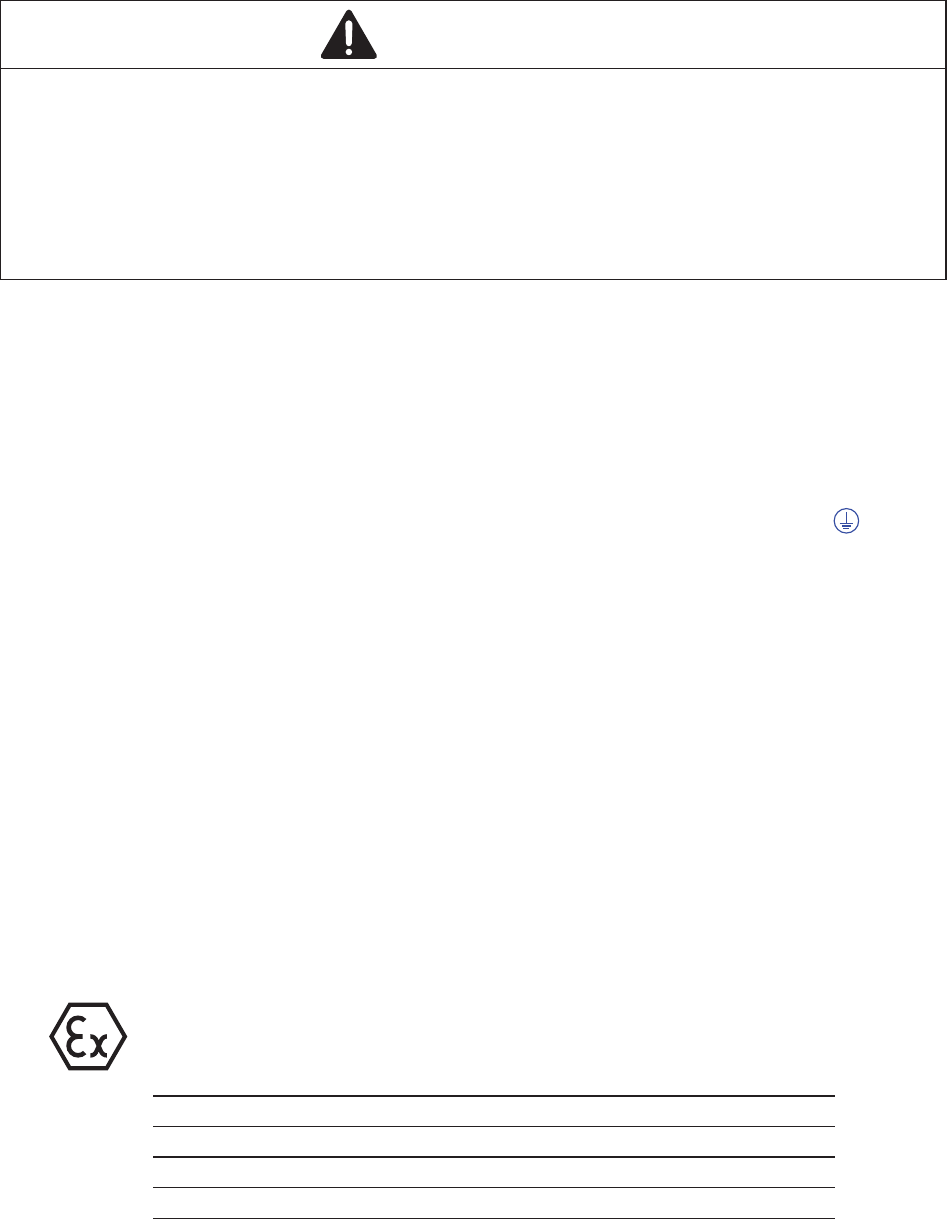
12 S1A31526 - Draft
- 8/2010
Shielding ground
The shield of the connectable twisted pair cables is connected to the
metal casing of the device as a conductor.
Housing
Relevant for Rail-/IP40 types:
Only technicians authorized by the manufacturer are permitted to open
the housing.
Make sure that the electrical installation meets local or nationally
applicable safety regulations.
IP67 types:
A separate screw connector on the housing is provided for the functional
ground (FE). This is indicated by the functional ground symbol ( ). The
functional ground is electrically connected to the switching ground and the
metal housing of the device.
Rail / IP40 types:
The lower panel of the device housing is grounded by means of the DIN
rail.
Environment
Refer to Chapter 4“Technical data“ for environmental considerations.
Relevant for use in Ex zone 2 according to ATEX 95 (ATEX 100a):
Only products labeled accordingly may be operated in Ex zone 2.
When operating the TCSNWA2A1 types in Ex zone 2, the following
applies:
II 3G
Ex nA II T4 -20°C ... +55°C
KEMA 10 ATEX 0133 X
CAUTION
EQUIPMENT OVERHEATING
When installing the device, make sure any ventilation slots remain free.
Maintain a clearance of at least 10 cm (3.94 in).
Failure to follow these instructions can result in injury or equipment
damage.
Temperature Code T4 Ambient –20 °C … +55 °C
List of Standards EN 60079-0: 2006
EN 60079-15: 2005
CLC/TR 50427: Dez. 2004
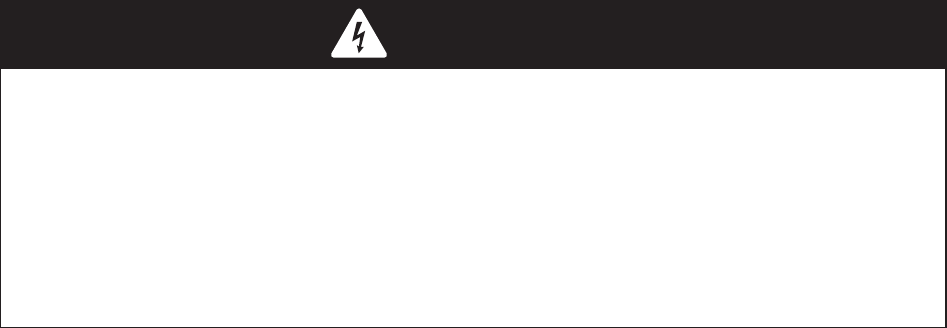
S1A31526 - Draft
- 8/2010 13
DO NOT OPEN THE DEVICE WHEN IT IS ELECTRICALLY CHARGED.
DO NOT DETACH ANY CONNECTORS WHEN THE DEVICE IS
ELECTRICALLY CHARGED.
DO NOT REMOVE THE LABELED HOUSING COVER.
The TCSNWA2A1 modules are delivered with the housing cover
installed. Remove the cover to make connections, then replace the
cover prior to operation.
Special conditions for safe use
Provisions shall be made to prevent the rated voltage from being
exceeded by transient disturbances of more than 40 %.
When the temperature under rated conditions exceeds 70 °C at the
cable or conduit entry point, or 80 °C at the branching point of the
conductors, the temperature specification of the selected cable shall
be in compliance with the actual measured temperature values.
Lightning protection
When you mount devices and / or antennas outdoors, there is a risk of
them being struck by lightning. Additionally, there is the risk of voltage
surges being transmitted into the interior of the building. It is your
responsibility to take appropriate measures to mitigate the effects of
lightning strikes. Make sure the equipment is installed by a licensed
electrician in accordance with local, regional and national regulations for
codes and standards (such as VDE 0182 and IEC 62305) and according
to best practices for your application and environment.
DANGER
EXPLOSIVE ENVIRONMENT
Do not open this device or detach any connectors when the device is
electrically charged.
Do not remove the labeled housing cover.
Failure to follow these instructions will result in death, serious injury,
or equipment damage.
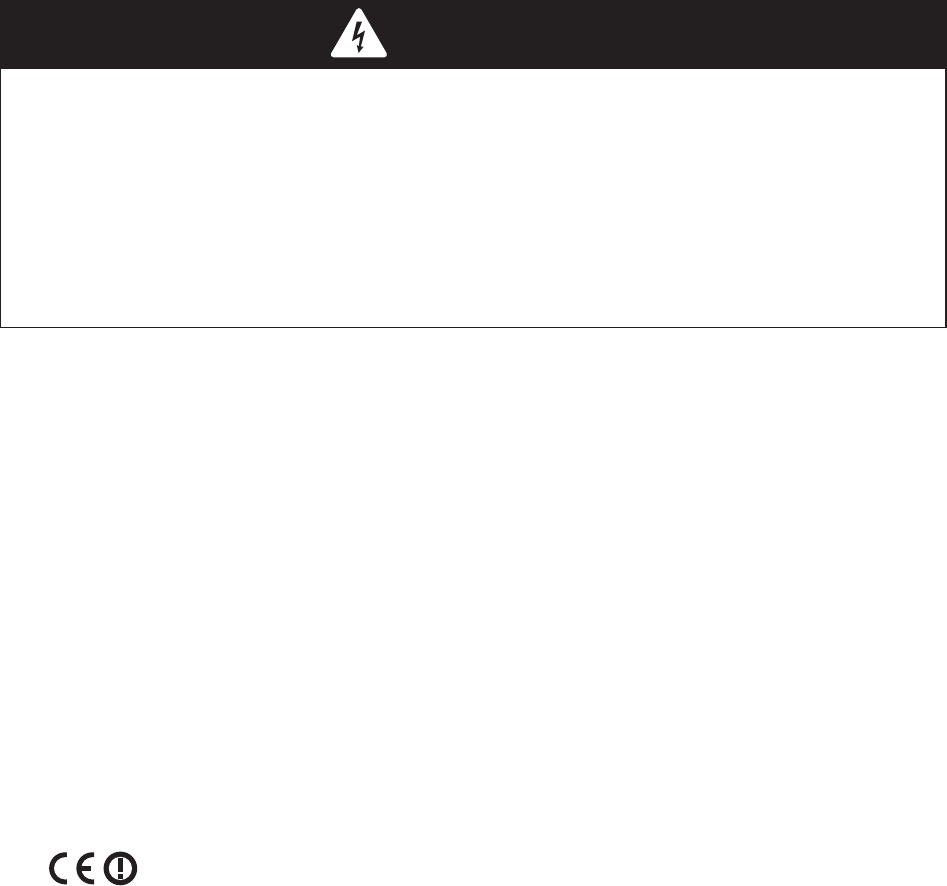
14 S1A31526 - Draft
- 8/2010
CE marking
The devices comply with the regulations contained in the following
European directive:
1999/5/EC
Directive of the European Parliament and the council for radio
installations and telecommunication systems and for the mutual
recognition of their conformity.
This directive also contains the goals of directive 2004/108/EC of the
European Parliament and the council for standardizing the regulations of
member states relating to electromagnetic compatibility, and directive
2006/95/EC of the European Parliament and the council for standardizing
the regulations of member states relating to electrical equipment to be
used within specific voltage ranges, but without applying the lower voltage
threshold.
This product may be operated in all EU states (EU = European
Union) under the condition that it has been configured correctly.
In accordance with the above-named EC directive (EC = European
Community), the EC conformity declaration will be at the disposal of the
relevant authorities at the following address:
Schneider Electric
35 rue Josep Monier
CS 30323
92506 Rueil-Malmaison
France
This product can be used in living areas (living area, place of business,
small business) and in industrial areas.
Information on using devices in motor vehicles (E1)
Some variants of the devices are E1-certified. Only operate suitably
labeled products in motor vehicles.
DANGER
LIGHTNING STRIKE AND VOLTAGE SURGES
Protect devices or antennas installed outdoors using lightning arrester
devices, such as lightning rods.
Install over voltage protector devices on every cable.
Failure to follow these instructions will result in death, serious injury,
or equipment damage.
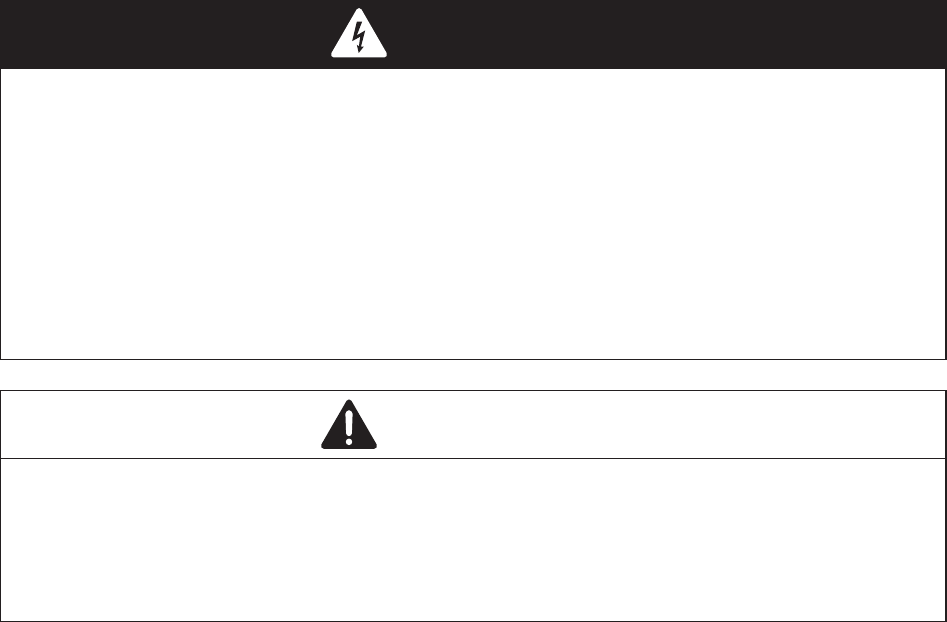
S1A31526 - Draft
- 8/2010 15
Note: To meet the requirements of directive 1999/5/EG (R&TTE
directive) when operating the device in a motor vehicle, do one of the
following:
XSupply the power to the device via a Power over Ethernet (PoE)
Switch or via a power unit that conforms to IEEE 802.3af.
You will find information on PoE-compatible Switches from Schneider
Electric at www.schneider-electric.com
XInstall an upstream filter on the 24V DC power supply. You will find
information on suitable filters at www.schneider-electric.com.
Note: If you are using an E1-certified device in a vehicle and want to be
able to drive the vehicle freely within the EU, set the country profile for
Germany. This country profile is identical to all the country profiles for EU
countries. Do not, however, use any special frequencies, such as BFWA.
FCC note:
This device complies with part 15 of the FCC rules.
Operation is subject to the following two conditions:
XThis device may not cause harmful interference, and
XThis device must accept any interference received, including
interference that may cause undesired operation.
DANGER
HAZARD OF ELECTRIC SHOCK, EXPLOSION OR ARC FLASH
Remove the Ethernet cable that provides PoE to disconnect power before
installing or removing any hardware and cables.
Always use a properly rated voltage sensing device to confirm that power is
off.
Failure to follow these instructions will result in death, serious injury,
or equipment damage.
CAUTION
EQUIPMENT DAMAGE
In a PoE installation, use only devices that adhere to the 802.3af standard.
Failure to follow these instructions can result in injury or equipment
damage.
16 S1A31526 - Draft
- 8/2010
Note: This equipment has been tested and found to comply with the limits
for a Class B digital device, pursuant to part 15 of the FCC Rules. These
limits are designed to provide reasonable protection against harmful
interference in a residential installation. This equipment generates, uses
and can radiate radio frequency energy and, if not installed and used in
accordance with the instructions, may cause harmful interference to radio
communications. However, there is no guarantee that interference will not
occur in a particular installation. If this equipment does cause harmful
interference to radio or television reception, which can be determined by
turning the equipment off and on, the user is encouraged to try to correct
the interference by one or more of the following measures:
Reorient or relocate the receiving antenna.
Increase the separation between the equipment and receiver.
Connect the equipment into an outlet on a circuit different from that to
which the receiver is connected.
Consult the dealer or an experienced radio/TV technician for help.
Important note:
This equipment complies with FCC and IC RSS-102 radiation exposure
limits set forth for an uncontrolled environment. This equipment should be
installed and operated with minimum distance 40 cm (15.8 in) between
the radiator and your body.
The antenna used for this transmitter must not be co-located with any
other transmitters within a host device, except in accordance with FCC
multi-transmitter product procedures.
This transmitter is restricted to indoor use only within the 5.15-5.25 GHz
band to reduce potential for harmful interference to co-channel mobile
satellite systems.
This Class B digital apparatus complies with Canadian ICES-003.
Cet appareil numérique de la classe B est conforme à la norme NMB-003
du Canada.
To reduce potential radio interference to other users, the antenna type
and its gain should be so chosen that the equivalent isotropically radiated
power (e.i.r.p.) is not more than that permitted for successful
communication.
This device has been designed to operate with the antennas listed below
in point-to-multipoint systems, and having a maximum gain of 9 dBi:
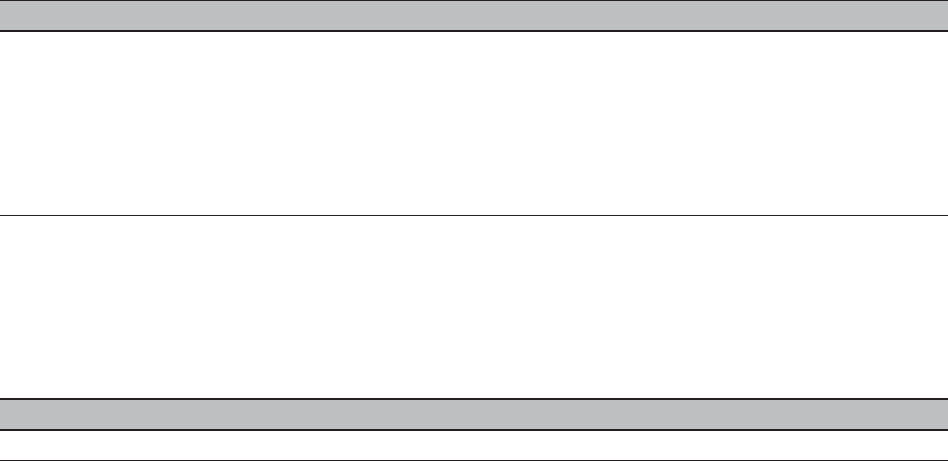
S1A31526 - Draft
- 8/2010 17
The antennas listed below have been designed for use exclusively in fixed
point-to-point systems operating in the 2400 MHz to 2483 MHz band:
Antennas not included in this list are strictly prohibited for use with this
device. The required antenna impedance is 50 ohms.
Recycling note
After usage, this product must be disposed of properly as electronic
waste, in accordance with the current disposal regulations of your county,
state and country.
Device model Antennas operating with this device model
TCSGWA242F TCSWAB2O
TCSWAB5O
TCSWABDH
TCSWAB2S
TCSWAB5S
TCSWABC5
TCSWABC10
Table 1: Antennas for use in point-to-multipoint systems
Device model Antennas operating with this device model
TCSGWA242F TCSWAB2D
Table 2: Antennas for use in fixed point-to-point systems
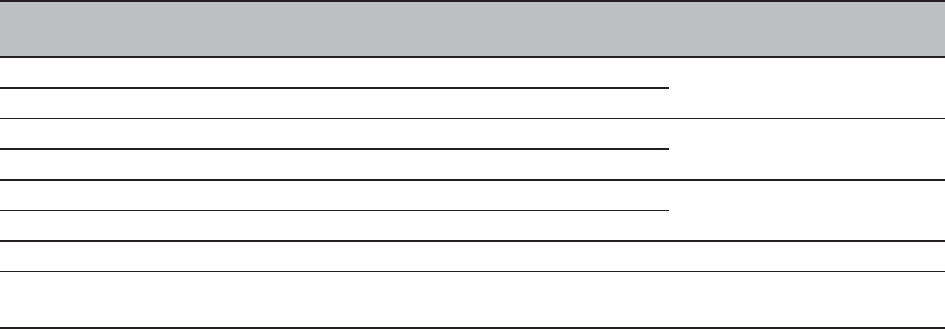
18 S1A31526 - Draft
- 8/2010
1 System Planning
1.1 WiFi devices
1.1.1 WiFi access points
Within the ConneXium WiFi offer are several access point devices, providing
a choice of:
X1 or 2 radios inside the device
Xthroughput
Xenvironmental ruggedness/ingress protection
Xconformance to government-mandated bandwidth restrictions
Devices rated for IP67 are often used for outdoor installations because of
their ability to withstand rain, snow and dust storms. IP40 devices are
designed primarily for indoor use, but they can be used outdoors when they
are installed inside weather-resistant IP67 enclosures.
Effective throughput for a WiFi device is heavily affected by overhead
considerations, particularly power loss due to the distance between the
access point and its power source. Often the real throughput over a WiFi link
is only half of the specified nominal throughput.
Each radio that operates in an access point requires an antenna.
Access Point
Model
Number of
Radios
Nominal
Throughput
Environmental
Ruggedness
Country Restrictions
TCSNWA241 1 up to 300 Mb/s rated for IP40a
a. IP40 indicates that the module has ingress protection against solid particles with a diameter
greater than 1 mm (.04 inch). No special protection against ingress of liquids.
outside U.S. and Canada
TCSGWA242 2 up to 54 Mb/s rated for IP40
TCSNWA241F 1 up to 300 Mb/s rated for IP40 in U.S. and Canada
TCSGWA242F 2 up to 54 Mb/s rated for IP40
TCSGWA271 1 up to 300 Mb/s rated for IP67b
b. IP67 indicates that the module has ingress protection against dust and immersion in water
up to 1 m (3.3 ft).
outside U.S. and Canada
TCSGWA272 2 up to 54 Mb/s rated for IP67
TCSGWA271F 1 up to 300 Mb/s rated for IP67 in U.S. and Canada
TCSNWA2A1 1 up to 300 Mb/s rated for IP67
and ATEXc
c. ATEX indicates that the device is designed to operate in potentially explosive atmospheres.
outside U.S. and Canada
Table 3: ConneXium WiFi Access Point Characteristics

S1A31526 - Draft
- 8/2010 19
1.1.2 WiFi clients
A client is a radio device that resides in or is connected to a station. The client
allows the station to communicate wirelessly with an access point. The
PCMCIA card in a laptop that enables the computer to operate wirelessly is
a client, and the laptop is the station. Other types of stations might be moving
vehicles such as forklifts or I/O modules used in a machine such as a
conveyor belt. A client enables its station to operate wirelessly and may
enable the station to roam through a Wireless Local Area Network (WLAN)
environment without loosing its network connection by switching to the next,
strongest signal in the access point array.
Any of the ConneXium WiFi access points can be configured as a client. Also
offered is two pure limited-functionality client devices, the TCSGWC241 and
the TCSGWC241F. These module each have 1 radio, a nominal throughput
of 54 Mb/s, and an IP40 rating. The TCSGWC241 is designed for use outside
the U.S. and Canada; the TCSGWC241F can be used in the U.S. and
Canada.
Each radio in a client device also requires an antenna. Laptop computers
frequently have an antenna built into the screen. If you are using a
ConneXium WiFi device as a client, you need to select the appropriate
ConneXium WiFi antenna(s) for the station. For example, a TCSWABDH
hemispherical antenna is designed to mount onto a moving station, e.g., on
the roof of a vehicle such as a forklift.
1.2 Frequency Bands
ConneXium WiFi devices communicate in the radio spectrum. They operate
in defined bandwidths, and they often share that bandwidth space with other
devices. The requirements of your application will determine the frequency
band in which you choose to operate and the types of ConneXium WiFi
devices to select.
1.2.1 The ISM Bands
The IEEE manages a series of specifications for local area networking called
the 802 family. WiFi devices fall under four 802.11 standards:
Standard Frequency Band Transmission Rate
802.11a 5 GHz up to 54 Mb/s
802.11b 2.4 GHz 5.5 Mb/s
11 Mb/s
802.11g 2.4 GHz up to 54 Mb/s
802.11n 2.4 and 5 GHz up to 300 Mb/s
Table 4: WiFi Frequencies and Speeds
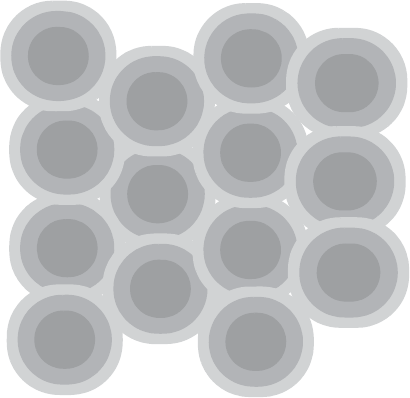
20 S1A31526 - Draft
- 8/2010
The 2.4 GHz and 5 GHz bands are reserved for industrial, scientific and
medical (ISM) equipment, which uses the radio spectrum for transmitting and
receiving data. They are called the ISM bands. Devices operating within the
bandwidths shared by ConneXium WiFi devices are usually unlicensed.
Working in the 2.4 GHz Band
Signals in the lower-frequency 2.4 GHz band (802.11b, 802.11g, and
sometimes 802.11n) can propagate through obstacles such as wood,
untempered glass and drywall better than 5 GHz signals. Therefore lower
frequency transmissions can travel longer distances and are sometimes
needed in locations where clients are separated from access points by
walls, windows, high shelves, etc.
The 2.4 MHz bandwidth is such that network throughput often suffers
because of device density in the band. Other ISM devices, such as
microwave ovens and cordless phones, operate in the band and can take
space in the band away from the ConneXium WiFi network.
Another consideration that can make communications slow, particularly
when a WLAN requires many access points for coverage, is the limited
channel capacity of the 2.4 GHz band. Each access point in the WLAN
operates on a channel that you assign it in the configuration process. As
a roaming client traverses the WLAN from access point to access point, it
should maintain uninterrupted communication.
The 2.4 GHz band provides only 13 channels (only 11 are available in
North America), To reduce interference from channel overlap, adjacent
channels in the WLAN should be separated by at least 25 MHz. Most
users choose to run 3 channels, channels 1, 6, and 11. The illustration
below shows an ideal coverage plan where a series of ConneXium WiFi
access points broadcasting with omnidirectional antennas are arranged
by channel to limit the channel overlap.
1
11
6
6
11
6
11
1
1
1
1
11
1
6

S1A31526 - Draft
- 8/2010 21
This coverage illustration is considered an ideal WLAN layout, but quite
often it cannot be installed so cleanly. Walls inside a building or
geographical barriers outdoors often deflect the radio wave transmission.
The floor plan in your building, the terrain and landscape in an outdoor
application, and the presence of other non-WiFi noise in the band need to
be anticipated as part of a network plan before your equipment is
purchased, then tested thoroughly as part of the installation process.
Schneider Electric recommends that you commission a professional site
survey (an independent study of your site requirements) to prepare for the
installation of a WLAN (see page 37).
Working in the 5 MHz Band
One clear advantage that a signal in the higher-frequency 5 GHz band
(802.11a and sometimes 802.11n) has is the availability of multiple
channels that do not overlap. In this radio spectrum, at least 8 channels
can be supported cleanly. Another advantage is that the band is not
populated by legacy ISM devices, so interference is much less likely.
There are some disadvantages though. Signals in the 5 MHz band
operate well when there is a clear and unobstructed line of sight. They do
not propagate well through physical obstacles such as interior walls and
doors and outdoor traffic and terrain. Also, some client devices, such as
the built-in wireless adapters in many laptops, operate only in the 2.4 GHz
band.
All of the ConneXium WiFi access point devices are dual-band, i.e., they
operate in both the 2.4 MHz and 5 MHz frequency bands. However, you
need to be aware of any bandwidth restrictions at your site when you
select your antennas because several of them are band-specific.
Here is how the access points perform in terms of transmission rate:
AP Device 802.11a 802.11b 802.11g 802.11n
TCSNWA241 Yes Yes Yes Yes (up to 300 Mb/s)
TCSNWA241F
TCSGWA242 Yes Yes Yes No (up to 54 Mb/s)
TCSGWA242F
TCSGWA271 Yes Yes Yes Yes (up to 300 Mb/s)
TCSGWA271F
TCSGWA272 Yes Yes Yes No (up to 54 Mb/s)
TCSGWA2A1 Yes Yes Yes Yes (up to 300 Mb/s)
Table 5: ConneXium WiFi access point transmission rates

22 S1A31526 - Draft
- 8/2010
1.2.2 Government Regulation of the ISM Bands
Governments control and regulate the allotment of radio spectrum in their
airspace. In Europe, for example, band allocation is managed by the
European Radiocommunications Office (ERO), and in the United States and
Canada by the Federal Communications Commission (FCC).
If your ConneXium WiFi network is being designed to operate in the United
States or Canada, different access point modules are needed than if your
network is located in Europe, Asia, or Australia:
1.2.3 Anticipating Radio Wave Behavior
Because WiFi relies on radio bands for data transmission and reception, you
need to expect some network behaviors that differ from those on the wired
network. These behaviors include:
Xthe ways that the transmissions propagate through physical impediments
and the atmosphere
Xthe unbounded nature of radio signals
Xthe inherent half-duplex nature of radio transmission and reception
Propagation can be hindered by both visible and invisible impediments.
Visible impediments
Visible impediments include walls, doors, windows and stacked material
inside a building. If you have chosen to operate at 2.4 GHz in order to get
the signal to propagate through a wall, you also need to know what is
behind the wall. A steel reinforcing beam or a mortar and cement fireblock
(a physical wall, not a network firewall) will deflect (or block) the radio
signal more severely than you might have expected if you assumed you
were passing through drywall.
AP Device U.S./Canada Other Countries IP67 a
a. IP67 indicates that the module has ingress protection against dust and immersion in water
up to 1 m.
ATEX b
b. ATEX indicates that the device is designed to operate in potentially explosive atmospheres.
TCSNWA241 No Yes No No
TCSGWA242
TCSNWA241F Yes No No No
TCSGWA242F
TCSGWA271 No Yes Yes No
TCSGWA272
TCSGWA271F Yes No Yes No
TCSGWA2A1 No Yes Yes Yes
Table 6: ConneXium WiFi access points by country and application environment
S1A31526 - Draft
- 8/2010 23
If you intend to propagate the signal through windows, you need to be
aware of the characteristics of the glass. 2.4 GHz signals can pass
through standard window glass relatively cleanly, but tempered or bullet-
proof glass severely deflects the signal.
If you are planning an outdoor implementation of WiFi, you need to
consider the existing terrain over which the signal will pass. If you need to
send a signal over a hill or over another building, you need to use an
access point and antenna as a bridge. If you are traversing an area that
has an unobstructed line of sight between the two points in your link,
make sure that the line will remain unobstructed as long as you need your
network. A signal may work well in the winter when the trees are bare, but
it may suffer significant degradation when the leaves bloom. If you are
traversing an open field, you need to know whether a new building will be
constructed between the two ends of the link.
You also need to know that some form of power supply is near each
ConneXium WiFi access point. If the power is to be delivered over the
Ethernet (PoE), remember that the access point must be within 100 m
(109 yd) of the Ethernet cabinet.
Invisible impediments
Invisible impediments are the radio signals that compete with your WLAN
in the same bandwidth. This competition is more common in the 2.4 MHz
band because so many other ISM equipment uses the frequency band.
Realize that if your business is involved in microwave work, for example,
a 2.4 GHz WLAN will need to compete for bandwidth in the same
frequency band. This is also true for Bluetooth and some other unlicensed
radio devices.
Boundless nature of radio transmissions
Another key difference between a wired and a wireless network is the fact
that wireless radio transmissions will not be contained by the walls of your
building. Unlike a wired network where signals travel over a defined path,
radio signals bounce off obstacles and penetrate through the boundaries
of your facility to the outside world.
ConneXium WiFi devices are equipped with powerful authentication and
encryption features that can help protect your data from unauthorized
listeners and traffic. Refer to the ConneXium WiFi Configuration and
Aministration Guide for details.
24 S1A31526 - Draft
- 8/2010
Half duplex communication
Communications between a ConneXium WiFi access point and its clients
or between multiple access points is half-duplex. One end of the link must
wait while the other transmits, resulting in slower communications.
Wireless should not be used as the sole or primary means of control in a
time-critical application.
Because communications are via broadcast, messages are sent to all
participants in the network. The overall transmission capacity of the
ConneXium WiFi access point is therefore shared by all the participants.
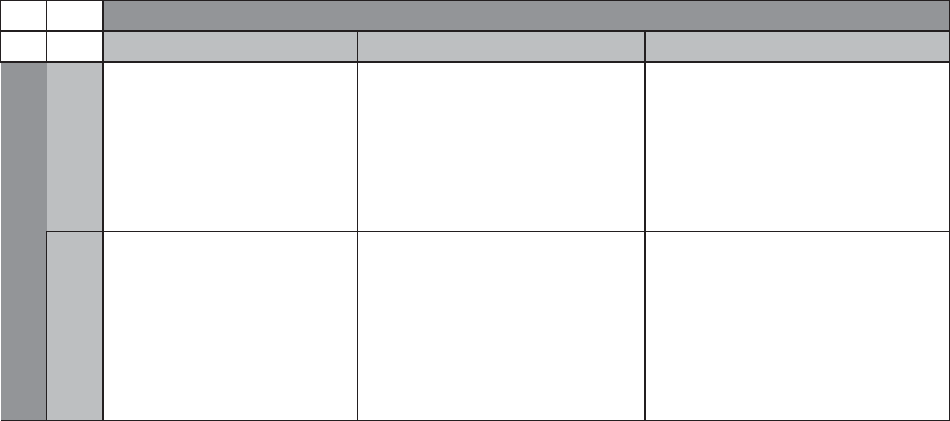
S1A31526 - Draft
- 8/2010 25
2 Device description
2.1 Properties and functions
The devices of the ConneXium WiFi family let you set up WLANs (Wireless
Local Area Networks) in order to connect individual devices (PCs and mobile
computers) to a local network. In contrast to a conventional network
connection via copper or fiber optic cables, the communication is by means
of a radio link.
The devices of the ConneXium WiFi family can be used for both new
installations and for expanding an existing LAN. Because of their high level
of flexibility, you can combine large, small, mobile and non-mobile locations.
Anywhere that high bandwidths, stable operation and network security are
required, wireless LAN using the devices of the ConneXium WiFi family
provides a solution.
The devices of the ConneXium WiFi family can be installed quickly using
wizards, via the Windows configuration software or the Web interface.
The devices are designed for the special requirements of industrial
automation. They meet relevant industry standards. The devices operate
without fans and have a redundant power supply.
The devices differ with regard to their design, the standards they support and
their certifications, as shown in the table below:
Design
Rail-/IP40 types IP67 types Ex zone (ATEX)
Radio standards
801.11 a/b/g/h/i
types
TCSGWC241
TCSGWA242
TCSGWW242F
TCSGWA272
802.11 a/b/g/h/i/n
types
TCSNWA241
TCSNWA241F
TCSNWA271
TCSNWA271F
TCSNWA2A1
Table 7: Range of applications for TCSG, TCSN device types
26 S1A31526 - Draft
- 8/2010
2.1.1 IP67 types
The TCSGWA272, TCSNWA271, TCSNWA2A1 and TCSNWA271F devices
belong to protection class IP67. The devices are particularly suitable for field
use. You can mount the devices on a flat surface or a pole.
TCSNWA2A1 types
TCSNWA2A1 devices are suitable for use in hazardous environments (Ex
zone 2 areas according to ATEX 95 / ATEX 100a).
2.1.2 Rail / IP40 types
TCSGWC241, TCSGWA242, TCSGWA242F, TCSNWA241 and
TCSNWA241F devices are suitable for use on DIN rails and on machines in
the production area, as well as on vehicles. They are mounted by snapping
them onto the DIN rail. With 5-way redundant power supply (4-way for the
TCSGWC241) and a vibration-resistant metal housing, these devices
provide high operational reliability.
2.1.3 802.11 a/b/g/h/i types
The TCSGWC241, TCSGWA242, TCSGWW242F and TCSGWA272 are
dual-band industrial wireless LAN access point/access clients with two
independent WLAN modules, in accordance with IEEE 802.11a/b/g/h and
IEEE 802.11i. In particular, the devices support the security mechanisms,
authentication procedures and data encryptions defined in the IEEE 802.11i
standard.
2.1.4 802.11 a/b/g/h/i/n types
The TCSNWA241, TCSNWA241F, TCSNWA271, TCSNWA2A1 and
TCSNWA271F are dual-band industrial high-performance wireless LAN
access point/access clients in accordance with IEEE 802.11a/b/g/h and
802.11n (draft 2.0). These devices provide a higher radio output with a
bandwidth of up to 300 Mbit/s. They support MIMO (Multiple Input Multiple
Output) and Multipath. The bandwidth is increased by using the multipath
transmission by means of reflections. Three antennas for sending and
receiving provide more stable network coverage with fewer shadow areas, as
shown in the following figure:
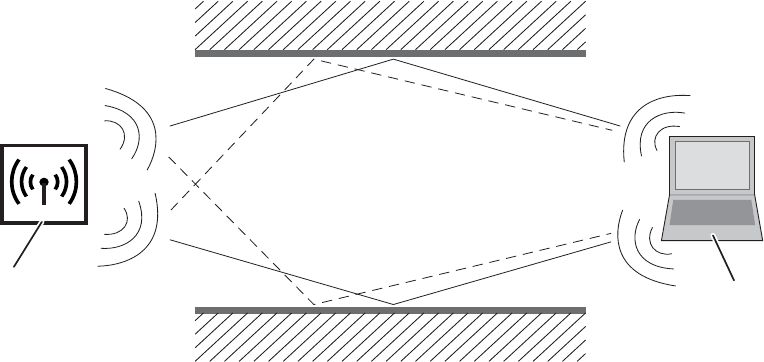
S1A31526 - Draft
- 8/2010 27
Figure 1: Schematic representation of MIMO (Multiple Input Multiple Output)
1 - MIMO Access Point 802.11n (TCSNWA241, TCSNWA241F)
2 - MIMO Client 802.11n
2
1
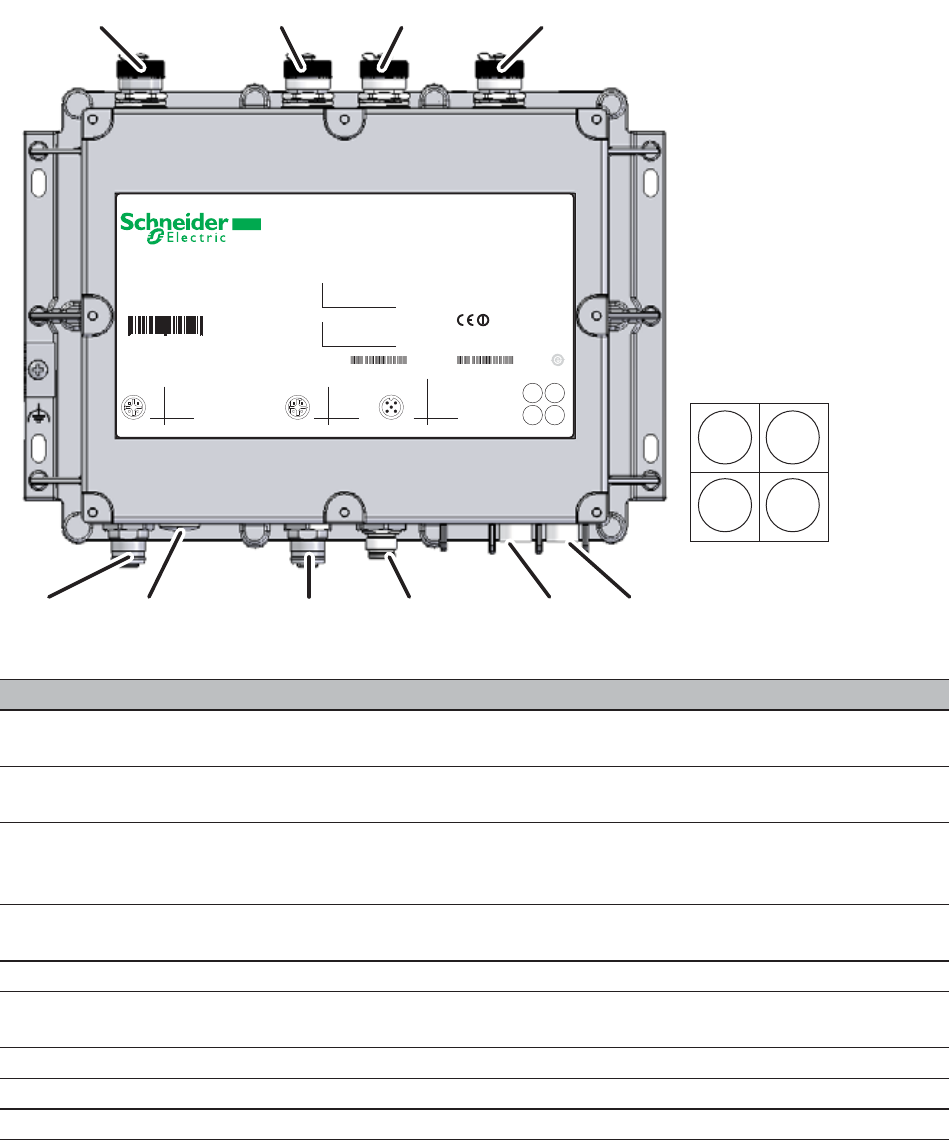
28 S1A31526 - Draft
- 8/2010
2.2 Interfaces and control elements
2.2.1 TCSGWA272
The device is equipped with the following connectors and operation
elements:
Interfaces and display and control elements
1 V.24 Serial interface, 4-pin M12 socket with A coding, data rate min. 19.2 kbit/s, max.
115 kbit/s, connector for serial configuration cable
2 Reset Reset button behind a removable IP67 cap
restarts the device or resets the configuration
3 Ethernet Ethernet port:
4-pin M12 socket with D coding, 10/100BASE-TX, Autosensing, Power over
Ethernet (PoE), automatic MDI/MDIX recognition (no crossover cable required)
4 Power Power supply connector for safety extra-low voltage (SELV/PELV), 5-pin M12
plug
5 LED 4 display elements (power, LS/DA, WLAN1, WLAN2)
6 AUX 2 Auxiliary connector for the second WLAN module for connecting external
antennas
7 AUX 1 Auxiliary connector for the first WLAN module for connecting external antennas
8 Main 2 Main connector for the second WLAN module for connecting external antennas
9 Main 1 Main connector for the first WLAN module for connecting external antennas
9 8 7 6
31 42 5 5
LS/DAPower
WLAN
2
WLAN
1
1 +24V DC
2 0V
3 0V
4 +24V DC
5 NC
Pin Function
4
3
21
5
4
1
23
1 TD +
2 RD +
3 TD -
4 RD -
Pin Function
4
1
23
1 TX
2 RX
3 N.C.
4 GND
Pin Function
Ethernet Power LED
WLAN
1
WLAN
2
PLS/DA
ResetV. 24
AUX1 AUX2
Main2
Main1
IEC 61131-2
A
c
N998
Compatible to IEEE 802.3af, Mode A
MAC: xxxxxxxxxxxx
LAN
WLAN MAC 2
WLAN MAC 1
170 mA (PoE):
I
in
CLASS 2
:
U
in
48 VDC
420 mA
:
I
in
CLASS 2
24 VDC
:
U
in
WiFi 802.11g AccessPoint IP67
Modicon
ConneXium WiFi
PV: 01 RL: 00 SV: 08.00
DOM: YYWW Made in Germany
21054600500
21054600500
3 595864 105956
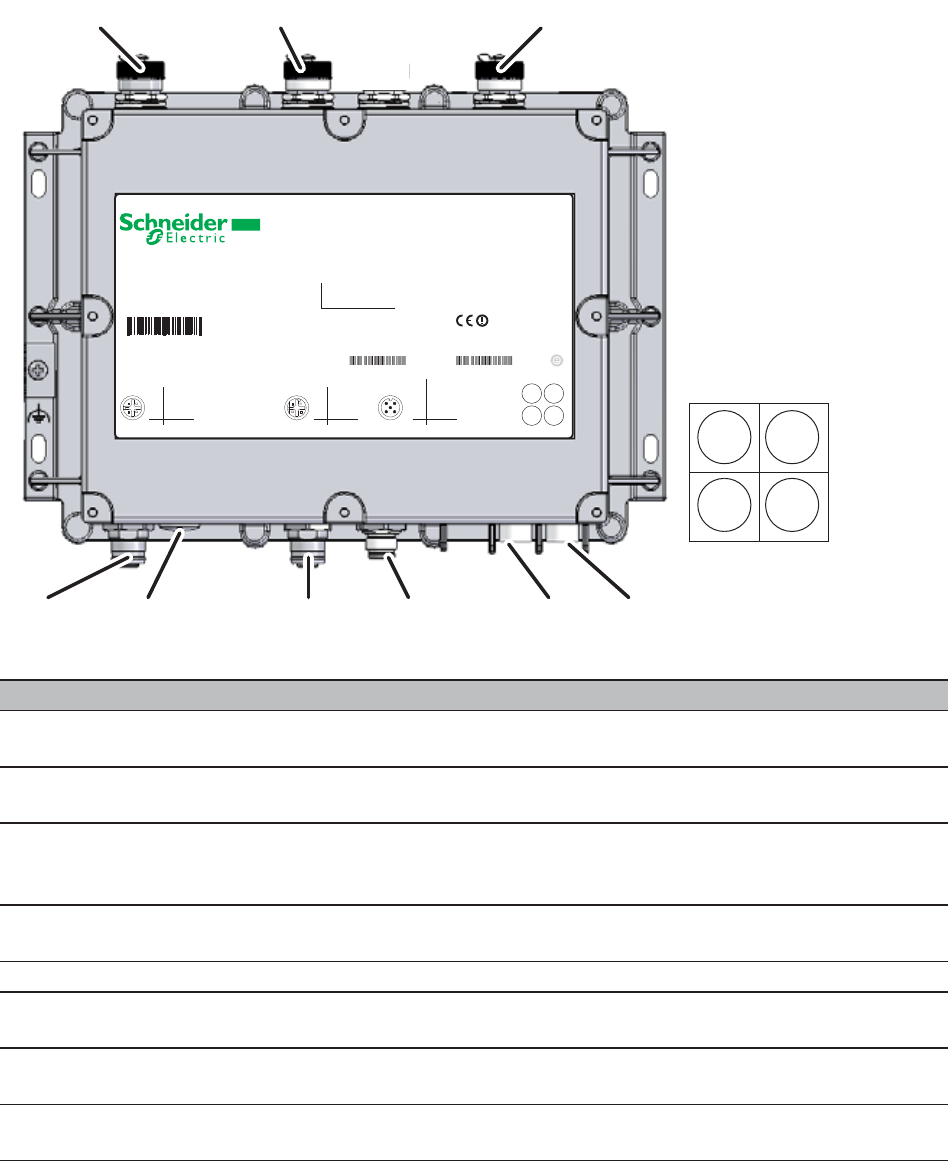
S1A31526 - Draft
- 8/2010 29
2.2.2 TCSNWA271, TCSNWA271F and TCSNWA2A1
The device is equipped with the following connectors and operation
elements:
Interfaces and display and control elements
1 V.24 Serial interface, 4-pin M12 socket with A coding, data rate min. 19.2 kbit/s, max.
115 kbit/s, connector for serial configuration cable
2 Reset Reset button behind a removable IP67 cap
restarts the device or resets the configuration
3 Ethernet Ethernet port:
4-pin M12 socket with D coding, 10/100BASE-TX, Autosensing, Power over
Ethernet (PoE), automatic MDI/MDIX recognition (no crossover cable required)
4 Power Power supply connector for safety extra-low voltage (SELV/PELV), 5-pin M12
plug
5 LED 4 display elements (power, LS/DA, WLAN, NC)
6 Antenna
3
Main connector for the WLAN module for connecting the third external
antenna
7 Antenna
2
Main connector for the WLAN module for connecting the second external
antenna
8 Antenna
1
Main connector for the WLAN module for connecting the first external
antenna
8 7 6
31 42 5 5
LS/DA
Power
WLAN
NC
1 +24V DC
2 0V
3 0V
4 +24V DC
5 NC
Pin Function
4
3
21
5
4
1
23
1 TD +
2 RD +
3 TD -
4 RD -
Pin Function
4
1
23
1 TX
2 RX
3 N.C.
4 GND
Pin Function
Ethernet Power LED
WLAN
1
WLAN
2
PLS/DA
Reset
V. 24
Antenna 3Antenna 2
Antenna 1
IEC 61131-2
A
c
N998
Compatible to IEEE 802.3af, Mode A
MAC: xxxxxxxxxxxx
LAN
WLAN MAC
170 mA (PoE)
:
I
in
CLASS 2
:
U
in
48 VDC
420 mA:I
in
CLASS 2
24 VDC:
U
in
WiFi 802.11n AccessPoint IP67
Modicon
ConneXium WiFi
PV: 01 RL: 00 SV: 08.00
DOM: YYWW Made in Germany
21054600500
21054600500
3 595862 001786
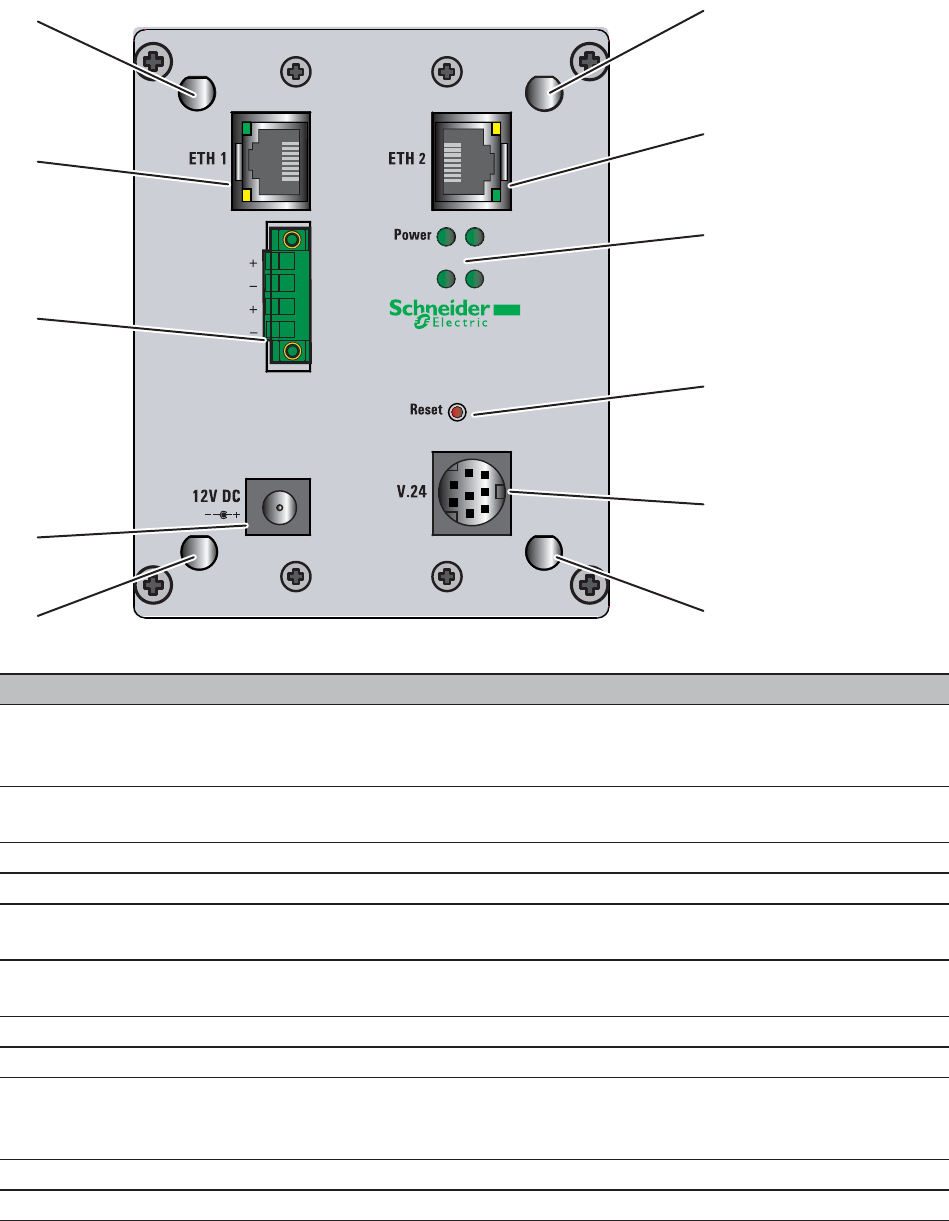
30 S1A31526 - Draft
- 8/2010
2.2.3 TCSGWA242 and TCSGWA242F
The device is equipped with the following connectors and operation
elements:
Interfaces and display and control elements
1 ETH1 First Ethernet port
10/100BASE-TX, Autosensing, Power over Ethernet (PoE), automatic MDI/
MDIX recognition (no crossover cable required)
2 +24V
0V
Power, power supply connector for safety extra-low voltage (SELV/PELV)
3 12V DC Power, power supply connector for safety extra-low voltage (SELV/PELV)
4 AUX 1 Auxiliary connector for the first WLAN module for connecting external antennas
5 AUX 2 Auxiliary connector for the second WLAN module for connecting external
antennas
6 V.24 MiniDin serial interface, data rate min. 19.2 kbit/s, max. 115 kbit/s, connector for
serial configuration cable
7 Reset Reset button to restart device or reset the configuration
8 LED 4 display elements (power, M1, WLAN1, WLAN2)
9 ETH2 Second Ethernet port
10/100BASE-TX, Autosensing, Power over Ethernet (PoE), automatic MDI/
MDIX recognition (no crossover cable required)
10 Main 2 Main connector for the second WLAN module for connecting external antennas
11 Main 1 Main connector for the first WLAN module for connecting external antennas
ConneXium WiFi
WLAN2
WLAN1
M1
Aux1 Aux2
Main 1 Main 2
24V DC
11
1
2
3
45
6
9
10
7
8
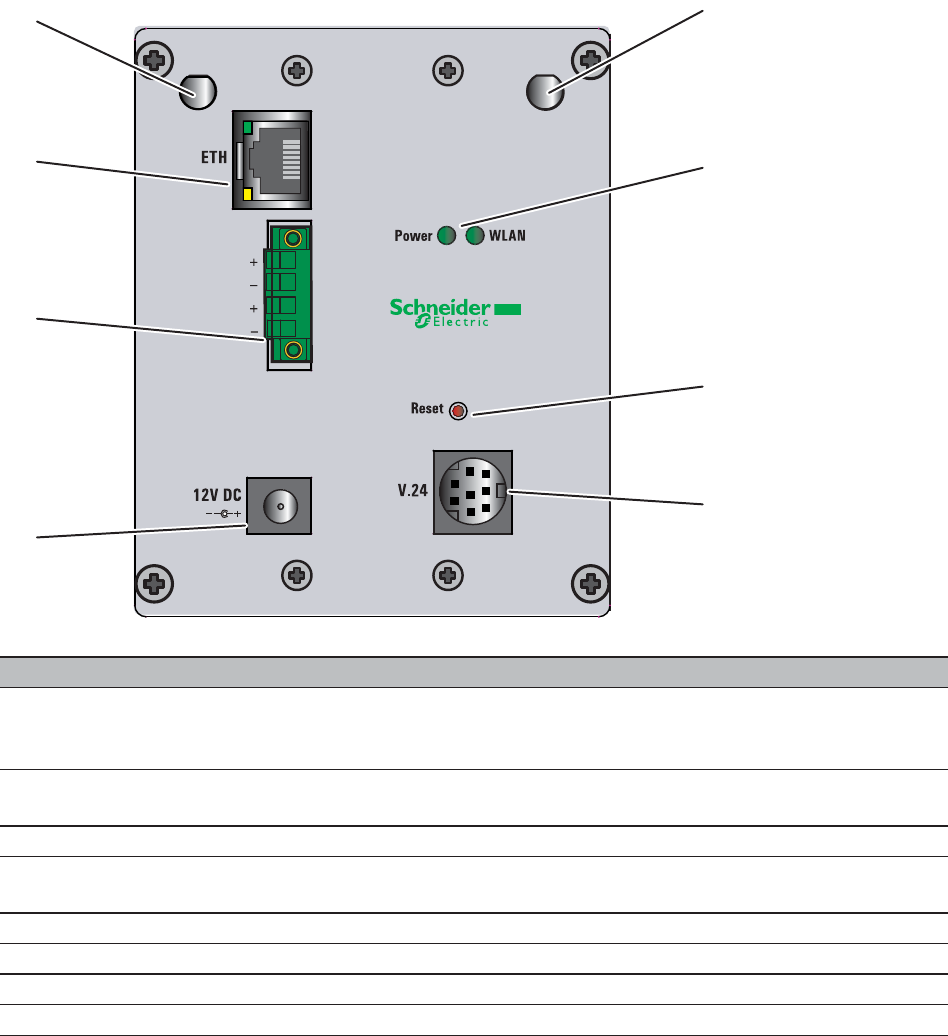
S1A31526 - Draft
- 8/2010 31
2.2.4 TCSGWC241
The device is equipped with the following connectors and operation
elements:
Interfaces and display and control elements
1 ETH Ethernet port:
10/100BASE-TX, Autosensing, Power over Ethernet (PoE), automatic MDI/
MDIX recognition (no crossover cable required)
2+24V
0V
Power, power supply connector for safety extra-low voltage (SELV/PELV)
3 12V DC Power, power supply connector for safety extra-low voltage (SELV/PELV)
4 V.24 MiniDin serial interface, data rate min. 19.2 kbit/s, max. 115 kbit/s, connector for
serial configuration cable
5 Reset Reset button to restart device or reset the configuration
6 LED 2 display elements (power, WLAN)
7 AUX Auxiliary connector for the WLAN module for connecting external antennas
8 Main Main connector for the WLAN module for connecting external antennas
AuxMain
8
1
2
3
4
7
5
6
ConneXium WiFi
24V DC
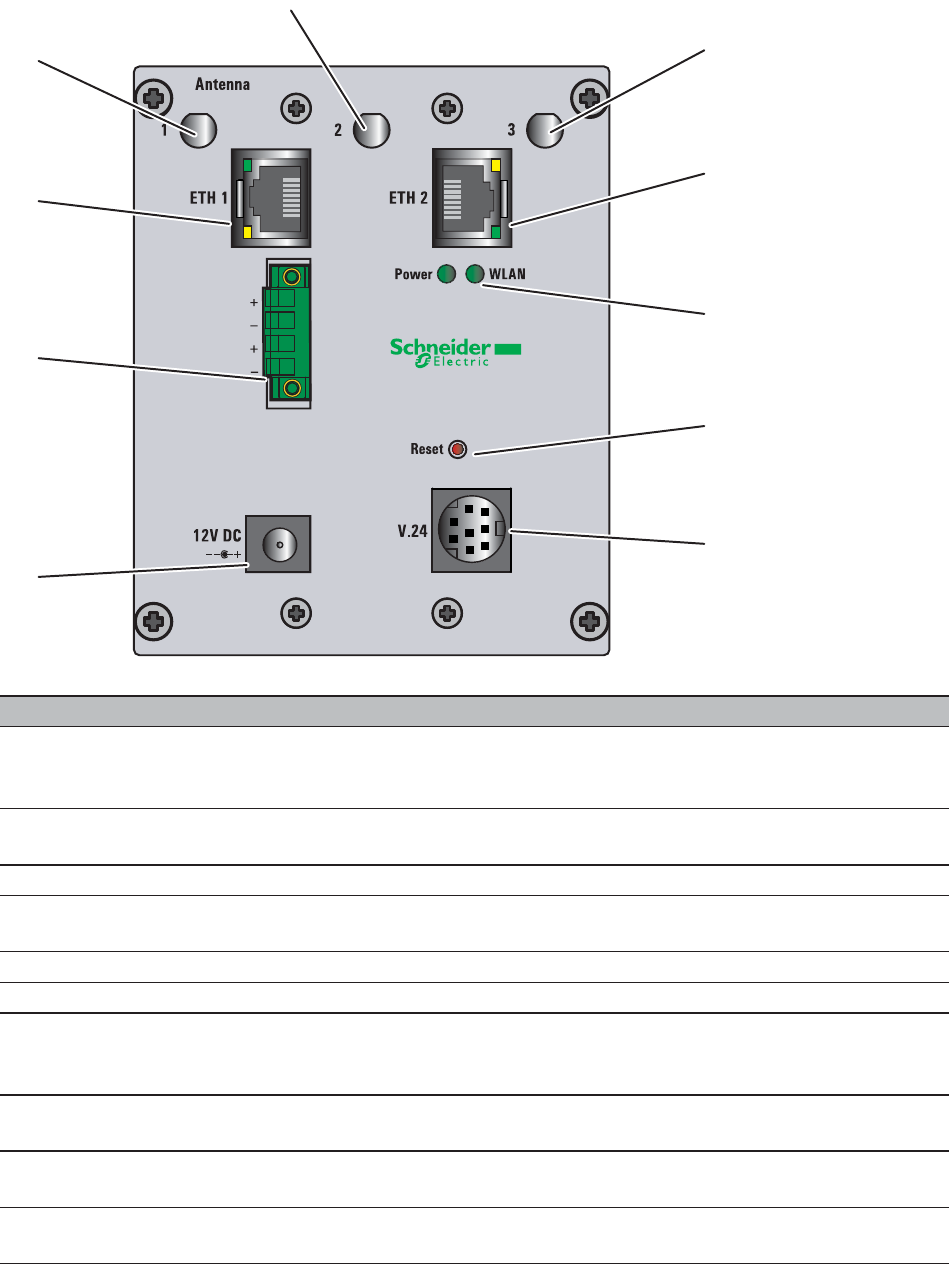
32 S1A31526 - Draft
- 8/2010
2.2.5 TCSNWA241 and TCSNWA241F
The device is equipped with the following connectors and operation
elements:
Interfaces and display and control elements
1 ETH1 First Ethernet port
10/100BASE-TX, Autosensing, Power over Ethernet (PoE), automatic MDI/
MDIX recognition (no crossover cable required)
2 +24V
0V
Power, power supply connector for safety extra-low voltage (SELV/PELV)
3 12V DC Power, power supply connector for safety extra-low voltage (SELV/PELV)
4 V.24 MiniDin serial interface, data rate min. 19.2 kbit/s, max. 115 kbit/s, connector for
serial configuration cable
5 Reset Reset button to restart device or reset the configuration
6 LED 2 display elements (power, WLAN)
7 ETH2 Second Ethernet port
10/100BASE-TX, Autosensing, Power over Ethernet (PoE), automatic MDI/
MDIX recognition (no crossover cable required)
8 Antenna
3
Main connector for the WLAN module for connecting the third external
antenna
9 Antenna
2
Main connector for the WLAN module for connecting the second external
antenna
10 Antenna
1
Main connector for the WLAN module for connecting the first external
antenna
10
1
2
3
9
4
7
8
5
6
ConneXium WiFi
24V DC
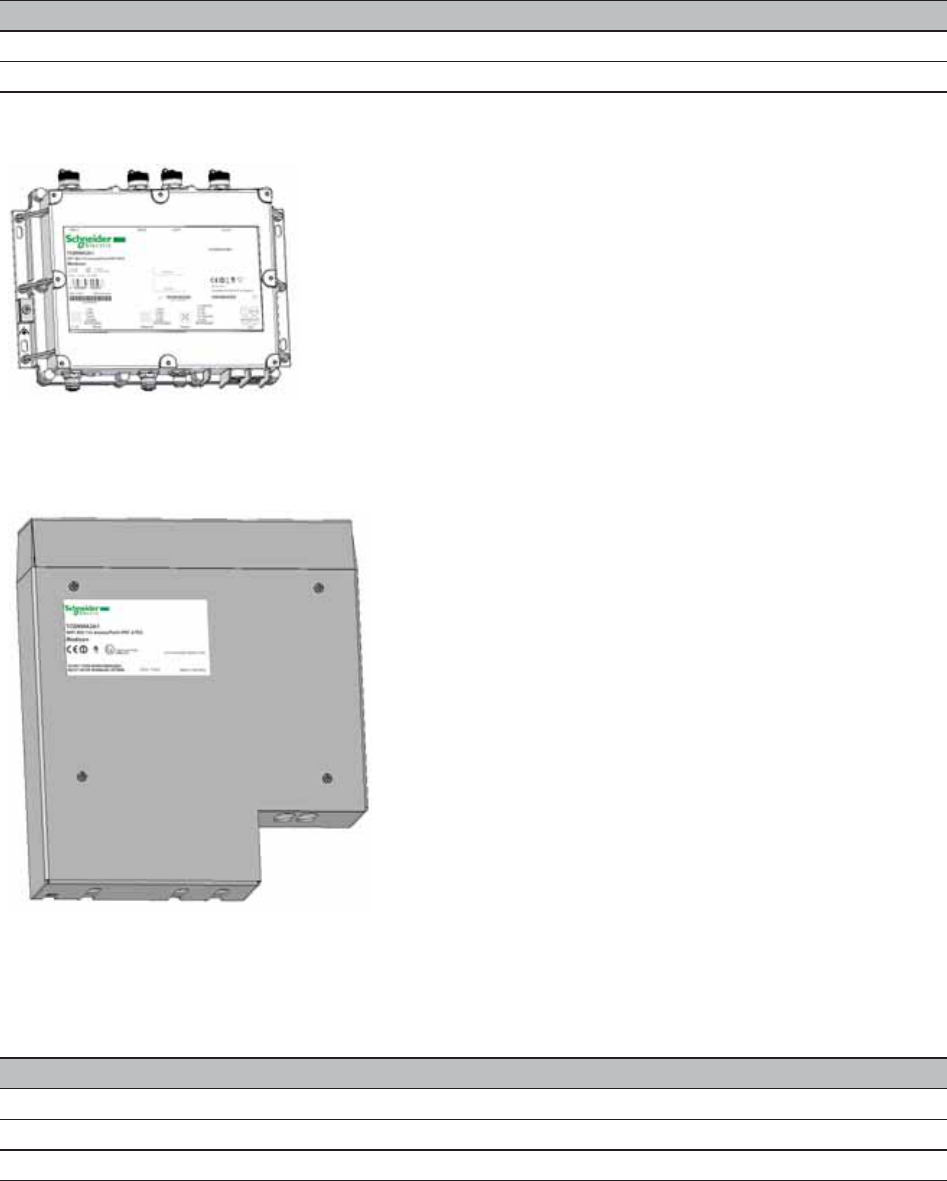
S1A31526 - Draft
- 8/2010 33
2.3 Device models
2.3.1 TCSGWA272 devices
Figure 2: TCSGWA272 type device variants
Figure 3: Device models with housing cover: TCSNWA2A1 types
2.3.2 TCSGWA242.../TCSGWC241 devices
Device Area of application
TCSGWA272 Outdoors, also hazardous environments
TCSNWA2A1 Outdoors, also hazardous environments
Device Area of application
TCSGWA242 DIN rail and flat surface mounting
TCSGWA242F DIN rail and flat surface mounting
TCSGWC241 DIN rail and flat surface mounting
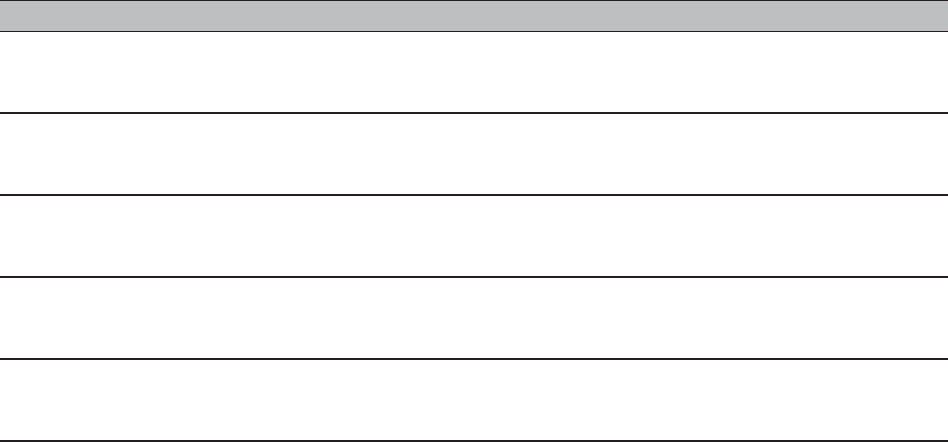
34 S1A31526 - Draft
- 8/2010
2.3.3 TCSNWA271... and TCSNWA241... devices
Device Area of application
TCSNWA271 DIN rail mounting
Higher radio output and more stable network coverage through MIMO
with 3 antennas
TCSNWA2A1 Outdoors, also hazardous environments
Higher radio output and more stable network coverage through MIMO
with 3 antennas
TCSNWA271F DIN rail mounting
Higher radio output and more stable network coverage through MIMO
with 3 antennas
TCSNWA241 DIN rail mounting
Higher radio output and more stable network coverage through MIMO
with 3 antennas
TCSNWA241F DIN rail mounting
Higher radio output and more stable network coverage through MIMO
with 3 antennas

S1A31526 - Draft
- 8/2010 35
3 Assembly and start-up
3.1 Safety instructions
Staff qualification requirements
Only appropriately qualified staff should work on or near this equipment.
Such staff must be thoroughly acquainted with all the warnings and
maintenance measures contained in these operating instructions.
The proper and safe operation of this equipment assumes proper
transport, appropriate storage and assembly, and careful operation and
maintenance.
Qualified staff are persons familiar with setting up, assembling,
installation, starting up, and operating this product, and who have
appropriate qualifications to cover their activities, such as:
Xknowledge of how to switch circuits and equipment/systems on and
off, ground them, and identify them in accordance with current safety
standards
Xtraining or instruction in accordance with current safety standards of
using and maintaining appropriate safety equipment
Xfirst aid training
3.2 Overview of installation
Two or more devices configured with the same IP address can cause
unpredictable operation of your network.
Information on the basic settings of the device can be found in the
”ConneXium WiFi TCSG,TSCN Configuration and Administration Guide” on
the CD ROM.
WARNING
UNINTENDED EQUIPMENT OPERATION
Establish and maintain a process for assigning unique IP addresses to all
devices on the network.
Failure to follow these instructions can result in death, serious injury,
or equipment damage.
36 S1A31526 - Draft
- 8/2010
The following steps should be performed to install and configure a
ConneXium WiFi device:
XUnpacking and checking
XAssembling components (IP67 types)
XSelecting the location for mounting/setting up
XMounting outdoors (IP67 types)
XDIN rail mounting (Rail-/IP40 types)
XFlat surface mounting
XMounting/connecting external antennas
XConnecting LAN and WLAN connectors
XGrounding
XConnecting the supply voltage
XInstalling the data lines
XStarting up
XFinding and configuring devices
XInstalling external antennas
XEstablishing basic settings
3.3 Unpacking and checking
Check that the contents of the package are complete (see page 70
“Scope of delivery“).
Check the individual parts for transport damage.
3.4 Assembling components (IP67 types)
To protect the exposed contacts of the components from dirt, the individual
system components must be connected in a dry and clean area. Seal unused
ports with the cover caps supplied.
Note: Connectors are not electrical isolating devices.
Therefore, first plug the connector into the power supply plug, then switch on
the power supply.
Note: Protection class IP67 is only achieved if all the connected components
also fulfill protection class IP67.
Cover unused connectors with the cover caps supplied.
Only connect plugs and other components that fulfill protection class IP
67, and that are certified for a temperature range from -30 °C to +55 °C
(-22 °F to +131 °F).
S1A31526 - Draft
- 8/2010 37
3.5 Selecting the location for mounting/
setting up
The role of the WiFi equipment in your application will be a determining factor
in how the devices are installed. For applications with even a moderate level
of complexity (e.g., multiple access point dispersion throughout a facility or
point-to-point connections between remote sites), the many and often unique
architectural, geographic, seasonal, and environmental conditions specific to
your application and your location must be seriously considered before the
installation plan is finalized. Unless you are implementing a very simple task
via WiFi, you should seriously consider commissioning a professional site
survey before you purchase and install your equipment.
Determining the requirements and expenditures for a successful WiFi
implementation are more complicated those of a typical wired solution. Your
choices are often based on trade-offs, for example:
XThe distance that your network must cover vs the required level of
throughput
XThe number of clients that may want to share the capacity of the network
vs the scope of the original implementation. (i.e., Is there a growth plan?)
XThe physical character of the space where the network will operate (the
architecture of a building for an indoor application, the terrain and weather
for an outdoor application) vs the amount of coverage you want to provide
XThe kinds and levels of signal interference that can be present in the work
environment vs acceptable performance
Factors that need to be carefully decided upon prior to installation include
frequency choices (especially for the antennas, but frequency can also be an
issue with some clients), throughput (which is more limited in a wireless
application than in a wired application), and level of coverage (which is often
a cost/benefit trade-off).
For more information about commissioning a WiFi site survey, contact your
local Schneider Electric Sales Representative.
3.6 Mounting outdoors (IP67 types)
Note: Set up the antenna close to the device. Use the shortest antenna cable
possible to minimize attenuation.
Note: Cable connections are subject to corrosion in outdoor installations.
Seal the outdoor cable connectors with water- and weather-resistant tape.
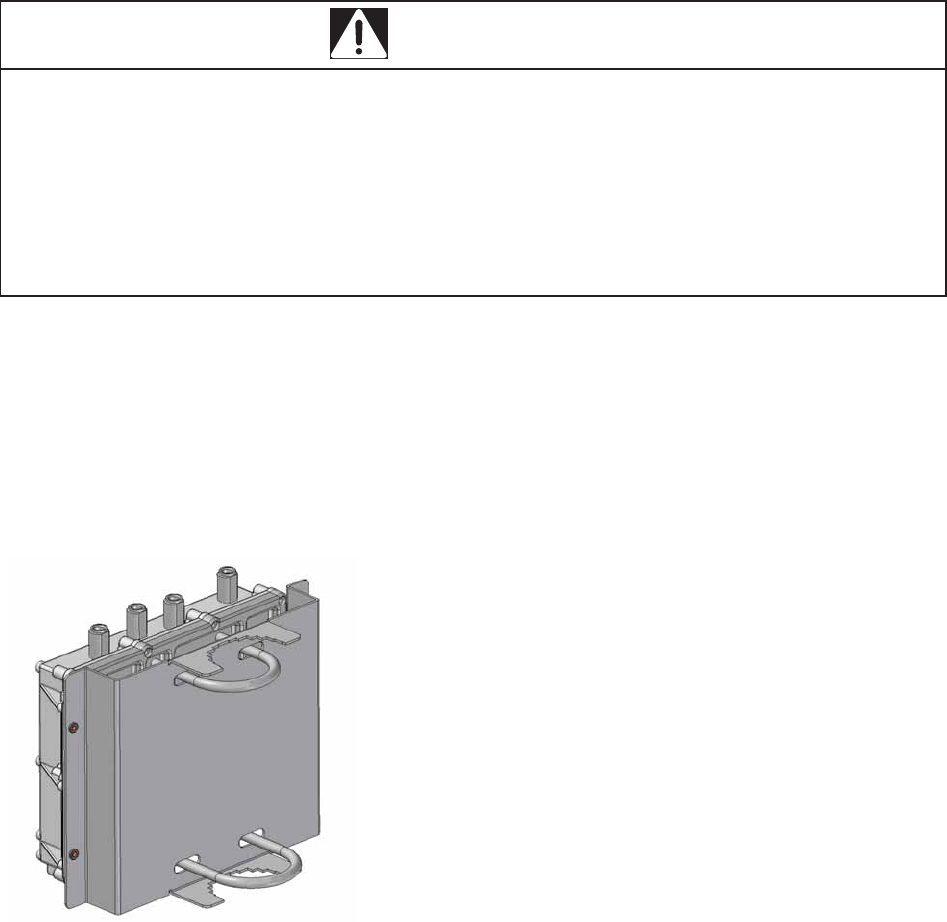
38 S1A31526 - Draft
- 8/2010
3.6.1 Lightning protection
When you mount devices and / or antennas outdoors, there is a risk of them
being struck by lightning. Additionally, there is the risk of voltage surges
being transmitted into the interior of the building. It is your responsibility to
take appropriate measures to mitigate the effects of lightning strikes. Make
sure the equipment is installed by a licensed electrician in accordance with
local, regional and national regulations for codes and standards (such as
VDE 0182 and IEC 62305) and according to best practices for your
application and environment.
3.6.2 Pole mounting
The IP67 types are suitable for pole mounting with the additional
TCSWABMK pole mounting set (see page 70).
The TCSWABMK pole mounting set is designed for:
XPole diameter: 37 mm to 60 mm (1.46 in to 2.36 in)
XMaximum permitted wind speed: 220 km/h (136 mph).
Figure 4: TCSWABMK pole mounting set
DANGER
TRANSIENT OR ELECTROSTATIC DISCHARGES
Protect devices or antennas installed outdoors using lightning arrester
devices, such as lightning rods
Install over voltage protector devices on every cable
Failure to follow these instructions will result in death, serious injury,
or equipment damage.
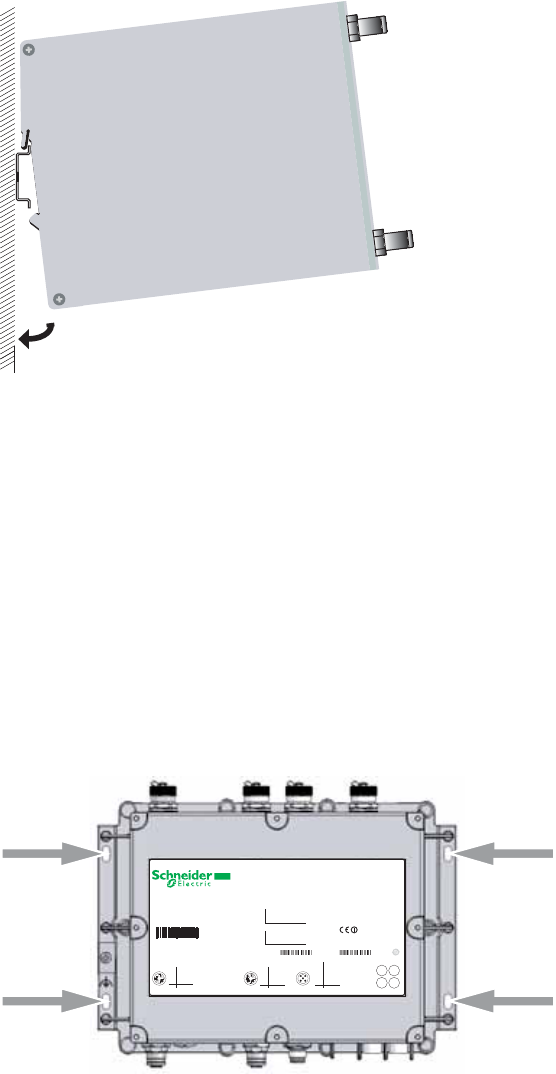
S1A31526 - Draft
- 8/2010 39
3.7 DIN rail mounting (Rail-/IP40 types)
Mount the device on a 35 mm DIN rail in accordance with DIN EN 60175.
Attach the upper snap-in guide of the device into the DIN rail and press it
down against the DIN rail until it snaps into place.
Figure 5: Mounting on the DIN rail
3.8 Flat surface mounting
3.8.1 IP67 types
Drill holes at the installation point.
Mount the device on a flat surface with four M5 screws.
Figure 6: IP67 types flat surface mounting
1 +24V DC
2 0V
3 0V
4 +24V DC
5 NC
Pin Function
4
3
21
5
4
1
23
1 TD +
2 RD +
3 TD -
4 RD -
Pin Function
4
1
23
1 TX
2 RX
3 N.C.
4 GND
Pin Function
Ethernet Power LED
WLAN
1
WLAN
2
PLS/DA
ResetV. 2 4
AUX1 AUX2
Main2
Main1
IEC 61131-2
A
c
N998
Compatible to IEEE 802.3af, Mode A
MAC: xxxxxxxxxxxx
LAN
WLAN MAC 2
WLAN MAC 1
170 mA (PoE):
I
in
CLASS 2
:
U
in
48 VDC
420 mA
:
I
in
CLASS 2
24 VDC
:
U
in
WiFi 802.11g AccessPoint IP67
Modicon
ConneXium WiFi
PV: 01 RL: 00 SV: 08.00
DOM: YYWW Made in Germany
21054600500
21054600500
3 595864 105956
40 S1A31526 - Draft
- 8/2010
3.9 Selecting the Right Antenna
3.9.1 Antenna Characterisitics
Antennas provide gain (i.e., signal enhancement in the desired directions) to
the radio signals transmitted by access point and client devices. The
ConneXium WiFi offer provides a selection of customized antennas to meet
the specific coverage, directional, and frequency band requirements of your
application.
Schneider Electric recommends that you always use ConneXium WiFi
antennas with ConneXium WiFi access points and clients.
In order to calculate the possible range and distance of a WLAN installation,
Schneider Electric provides a tool called the Antenna Distance Calculator.
The Excel-based calculator is available on the ConneXium WiFi CD, which is
supplied in the box with each ConneXium WiFi device.
Note: ConneXium WiFi access points and clients are shipped with small
paddle antennas for each radio. These antennas are primarily for test
purposes, not for most industrial applications. They could be used in a very
simple indoor application only.
ConneXium WiFi antennas fall into 2 main categories, omnidirectional and
directional. A third possibility is available in the form of a radiating (or leaky)
cable antenna.
3.9.2 Omnidirectional Antennas
Omnidirectional antennas radiate the signal out from the center of the
transmitting radio (an access point or a client) in all directions across the
horizontal plane, with a limited vertical range.
They are best deployed in open areas. Often they are distributed around
large open areas to provide continuous coverage for stationary and mobile
clients on the WLAN. ConneXium WiFi offers several omnidirectional
antennas that operate in different bandwidths and suit different application
scenarios:
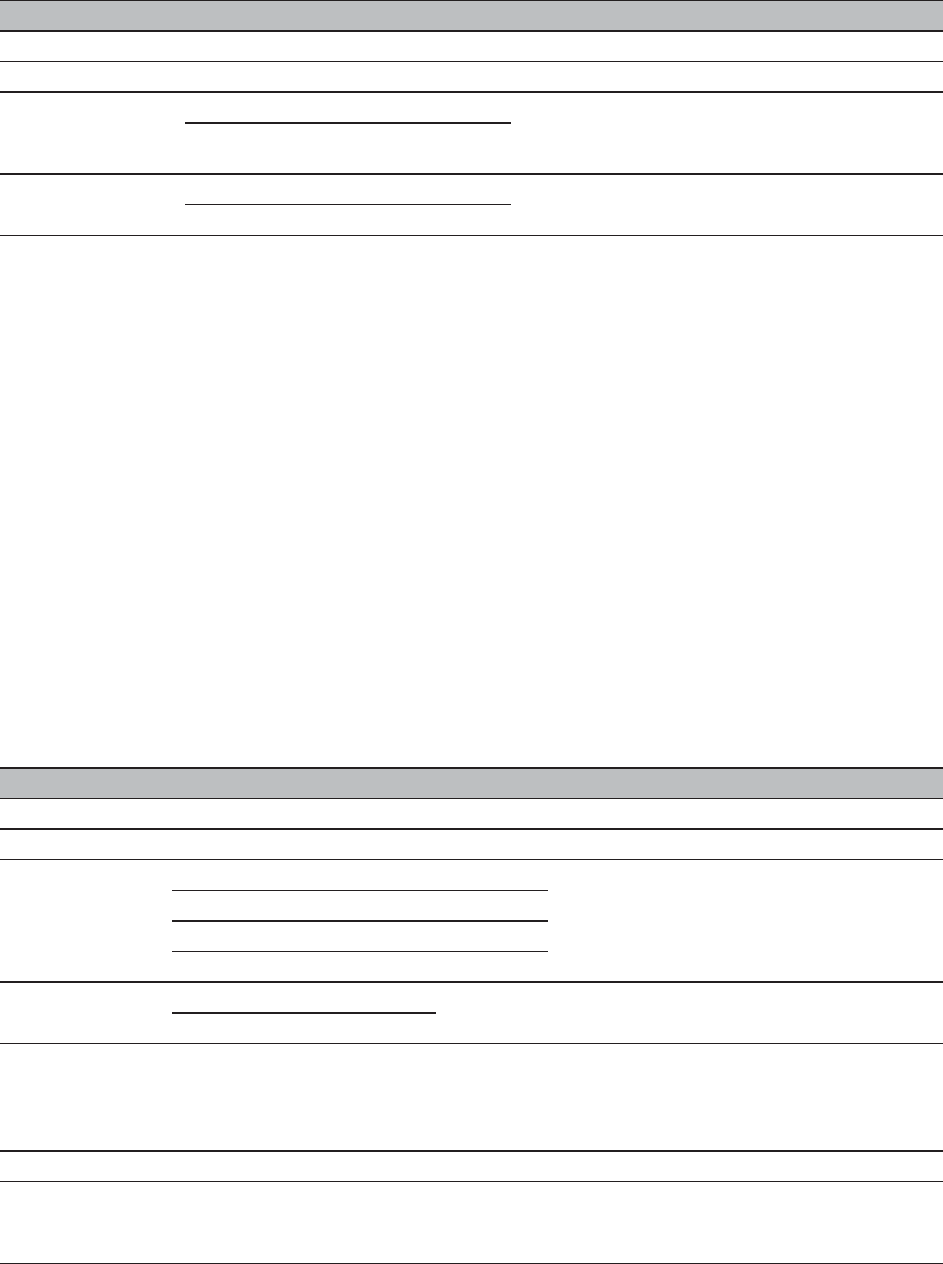
S1A31526 - Draft
- 8/2010 41
3.9.3 Directional Antennas
Directional antennas are moderate- to high-gain antennas that transmit in
one direction. They are usually the preferred antennas for point-to-point
WLAN links in outdoor applications. When used in this kind of application, the
key to success is to align them properly.
Directional antennas can also be used to transmit and receive through
corridors, aisles lined with stocking shelves, and hallways. ConneXium WiFi
offers several directional antennas that operate in different bandwidths and
suit different application scenarios:
Refer to the ”TCSG, TCSN Antenna Guide” for more distance details.
Model Frequency Band Gain Usage
TCSWAB2O 2.4 GHz 6 dBi indoor and outdoor use possible
TCSWAB5O 5 GHz 5 dBi indoor and outdoor use possible
TCSWABDON 2.4 GHz 3.5 dBi indoor and outdoor use possible
supports mixed band client stations
supports the 802.11n MIMO function a
a. MIMO is a multiple-input/multiple-output antenna configuration using more than one
transmitter antenna and more than one receiver antenna forDir multiple data streams. It
takes advantage of the higher transmission rate (300 Mb/s) of 802.11n to improve wireless
throughput.
5 GHz 5.5 dBi
TCSWABDH 2.4 GHz 6 dBi to be placed on mobile client stations, e.g.,
forklifts
5 GHz 8 dBi
Table 8: Omnidirectional Antenna Characteristics
Model Frequency Band/Range Gain Usage
TCSWAB2D 2.4 GHz 14 dBi
TCSWAB2S 2.4 GHz 8 dBi dual linear, ±45° slant polarization
TCSWAB5D 5150 - 5250 MHz 18 dBi medium-distance, partly sectoral
5 GHz coverage
5250 - 5350 MHz 19 dBi
5350 - 5725 MHz 18.5 dBi
5725 - 5875 MHz 18 dBi
TCSWAB5V 5150 - 5350 MHz 23 dBi long-distance 5 GHz coverage
IP67-compliant for outdoor use
5470 - 5875 MHz
TCSWAB5VN 5150 MHz - 5875 MHz 23 dBi the suggested antenna for use in long-
distance, high-transmission-rate (300
Mb/s) 802.11n applications in the
5 GHz frequency band
TCSWAB5S 5150 - 5925 MHz 9 dBi dual linear, ±45° slant polarization
TCSWAB5DN 5150 - 5875 MHz 9 dBi medium-distance P2P connections
supports MIMO
indoor and outdoor use possible
Table 9: Directional Antenna Characteristics

42 S1A31526 - Draft
- 8/2010
3.9.4 Leaky Cable
A leaky cable is a coaxial cable with small slots in the shield that operate as
antennas. They allow you to radiate radio signals along the cable path, e.g.,
around corners, through conduits in walls, etc. Signals can be transmitted
from both ends of the cable.
These antenna are rated for IP65 and are for indoor and outdoor use.
Leaky cables are available in 2 lengths (cable only):
X50 m (54.7 yd), model TCSWABC5
X100 m (109.4 yd), model TCSWABC10
These antennas support radio transmissions in the 2.4 MHz frequency band.
3.10 Mounting/connecting external antennas
3.10.1 Connectors for external antennas on IP67 types
The IP67 types have two to four connectors for connecting external
antennas. These connectors are N sockets.
The housing of the N socket and the signal connection are electrically
connected to the switching ground, the functional ground (FE) ( ) and the
metal housing of the device.
On delivery, the connectors are sealed with cover caps.
Unscrew the cover caps from the connectors to which you want to
connect external antennas.
Note: Insert the terminators supplied into unused sockets in order to avoid
radio signals from one WLAN module being received by the other WLAN
module.
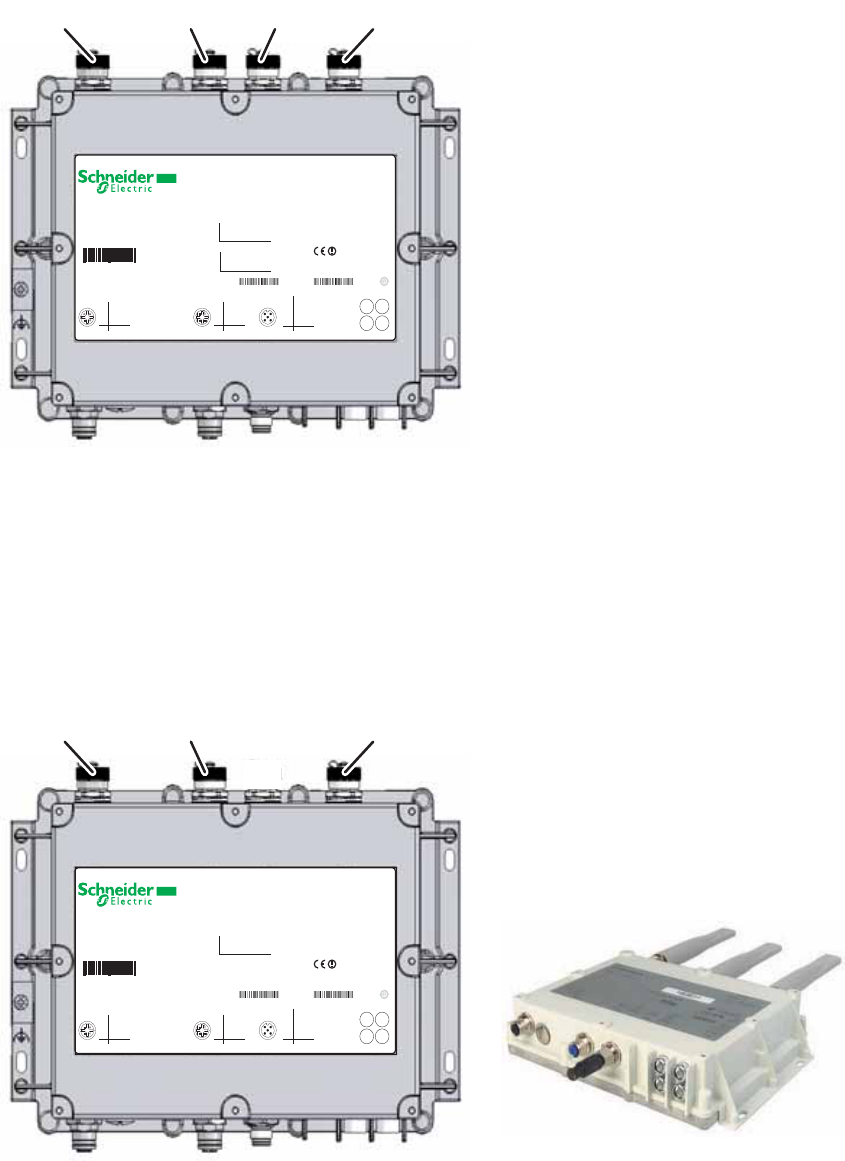
S1A31526 - Draft
- 8/2010 43
TCSGWA272
Figure 7: Connectors for external antennas on TCSGWA272
1 - Main 1
2 - Main 2
3 - AUX 1
4 - AUX 2
TCSNWA271, TCSNWA271F and TCSNWA2A1
Figure 8: Connectors for external antennas on TCSNWA271 and TCSNWA2A1
1 - Antenna 1
2 - Antenna 2
3 - Antenna 3
1 2 3 4
1 +24V DC
2 0V
3 0V
4 +24V DC
5 NC
Pin Function
4
3
21
5
4
1
23
1 TD +
2 RD +
3 TD -
4 RD -
Pin Function
4
1
23
1 TX
2 RX
3 N.C.
4 GND
Pin Function
Ethernet Power
LED
WLAN
1
WLAN
2
PLS/DA
ResetV. 24
AUX1 AUX2Main2
Main1
IEC 61131-2
A
c
N998
Compatible to IEEE 802.3af, Mode A
MAC: xxxxxxxxxxxx
LAN
WLAN MAC 2
WLAN MAC 1
170 mA (PoE):I
in
CLASS 2
:
U
in
48 VDC
420 mA
:
I
in
CLASS 2
24 VDC
:
U
in
WiFi 802.11n AccessPoint IP67 ATEX
TCSNWA2A1
Modicon
ConneXium WiFi
PV: 01 RL: 00 SV: 08.00
DOM: YYWW Made in Germany
21054600500
21054600500
3 595864 105987
1 +24V DC
2 0V
3 0V
4 +24V DC
5 NC
Pin Function
4
3
21
5
4
1
23
1 TD +
2 RD +
3 TD -
4 RD -
Pin Function
4
1
23
1 TX
2 RX
3 N.C.
4 GND
Pin Function
Ethernet Power
LED
WLAN
1
WLAN
2
PLS/DA
Reset
V. 24
Antenna 3Antenna 2
Antenna 1
IEC 61131-2
A
c
N998
Compatible to IEEE 802.3af, Mode A
MAC: xxxxxxxxxxxx
LAN
WLAN MAC
170 mA (PoE)
:
I
in
CLASS 2
:
U
in
48 VDC
420 mA:I
in
CLASS 2
24 VDC:
U
in
WiFi 802.11n AccessPoint IP67
Modicon
ConneXium WiFi
PV: 01 RL: 00 SV: 08.00
DOM: YYWW Made in Germany
21054600500
21054600500
3 595862 001786
1 2 3
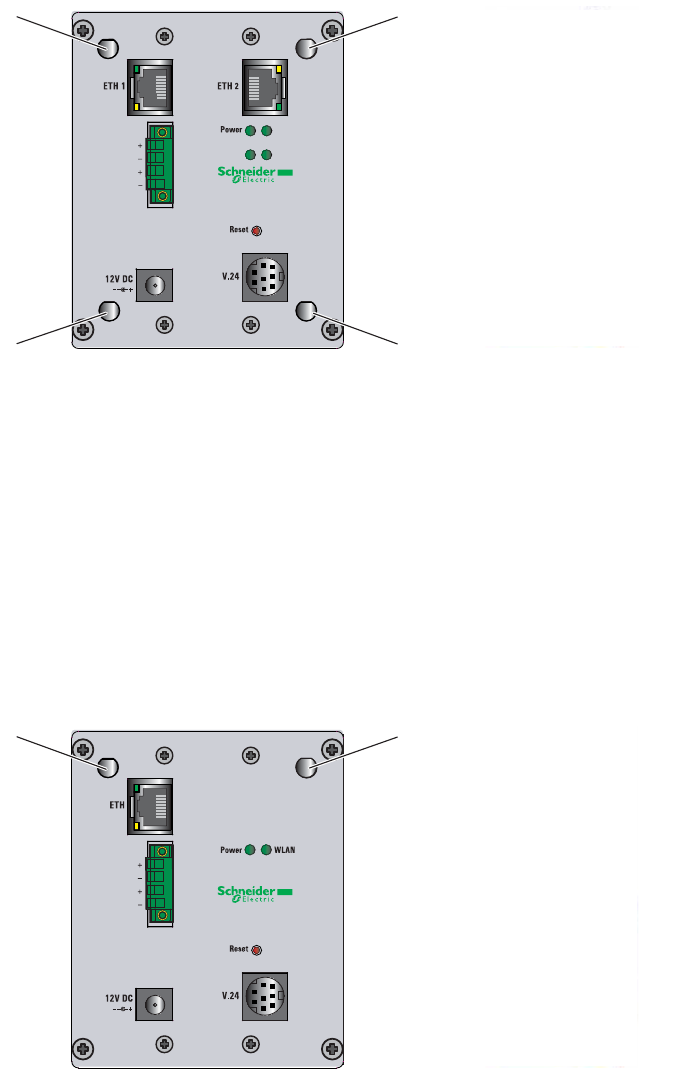
44 S1A31526 - Draft
- 8/2010
3.10.2 Connectors for external antennas on Rail/IP40 types
TCSGWA242 and TCSGWA242F
The devices have four Reverse satellite master antenna (SMA)
connectors for connecting external antennas.
Figure 9: Connectors for external antennas on TCSGWA242
1 - Antenna 1
2 - Antenna 2
3 - Aux1
4 - Aux2
TCSGWC241
The devices have two Reverse SMA connectors for connecting external
antennas.
Figure 10: Connectors for external antennas on TCSGWC241
1 - Main
2 - Aux
ConneXium WiFi
WLAN2
WLAN1
M1
Aux1 Aux2
Main 1 Main 2
24V DC
1
34
2
AuxMain
ConneXium WiFi
24V DC
12
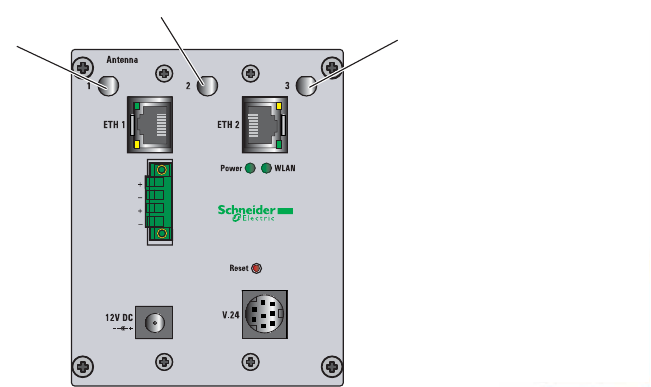
S1A31526 - Draft
- 8/2010 45
TCSNWA241 and TCSNWA241F
The devices have three Reverse SMA connectors for connecting external
antennas.
Figure 11: Connectors for external antennas on TCSNWA241
1 - Antenna 1
2 - Antenna 2
3 - Antenna 3
3.10.3 Mounting external antennas
Connect the external antenna to the corresponding Antenna Main
connector.
If you want to connect one antenna with only one connector for each radio
module, use the main connector.
a/b/g/h/i types: Use the respective main connector of the two radio
modules to connect antennas that have only one antenna connector,
without diversity.
Use the main and auxiliary connectors of one radio module if you want to
use the diversity function. The diversity function increases the connection
quality by always sending or receiving via the antenna providing the better
signal to the client. Also set this option for the respective radio module.
3.11 Connecting LAN and WLAN connectors
3.11.1 IP67 types
Connect the access point to your LAN for configuration.
Assemble the network cable with the M12 plug supplied.
ConneXium WiFi
24V DC
1
23

46 S1A31526 - Draft
- 8/2010
Plug the network cable into the LAN connector of the device, and into a
free network connection port on your local network (or into a free port on
a hub/switch). Alternatively, you can connect the device to a separate PC.
The port auto-negotiates upon connection; either a straight or a crossover
cable can be used.
3.11.2 Rail / IP40 types
Connect the access point to your LAN for configuration.
Plug the network cable into the LAN connector of the device, and into a
free network connection port on your local network (or into a free port on
a hub/switch). Alternatively, you can connect the device to a separate PC.
The port auto-negotiates upon connection; either a straight or a crossover
cable can be used.
3.12 Grounding
3.12.1 IP67 types
A separate anti-torsion screw connector on the housing is provided for the
functional ground (FE) . It is indicated by the functional ground symbol ( ).
The functional ground is electrically connected to the switching ground and
to the metal housing of the device.
For the ground wire, use a copper wire with a minimum cross section of
4 mm2 to 6 mm2 (for North America: AWG 11 to AWG 9) (including any
terminal sleeve used), and implement the grounding of the device via the
screw connector.
Clamp the ground wire between the two rectangular fastening plates - as
shown in the figure below - and fasten the screw.
Make sure that the ground wire is not in direct contact with the aluminum
housing of the device.
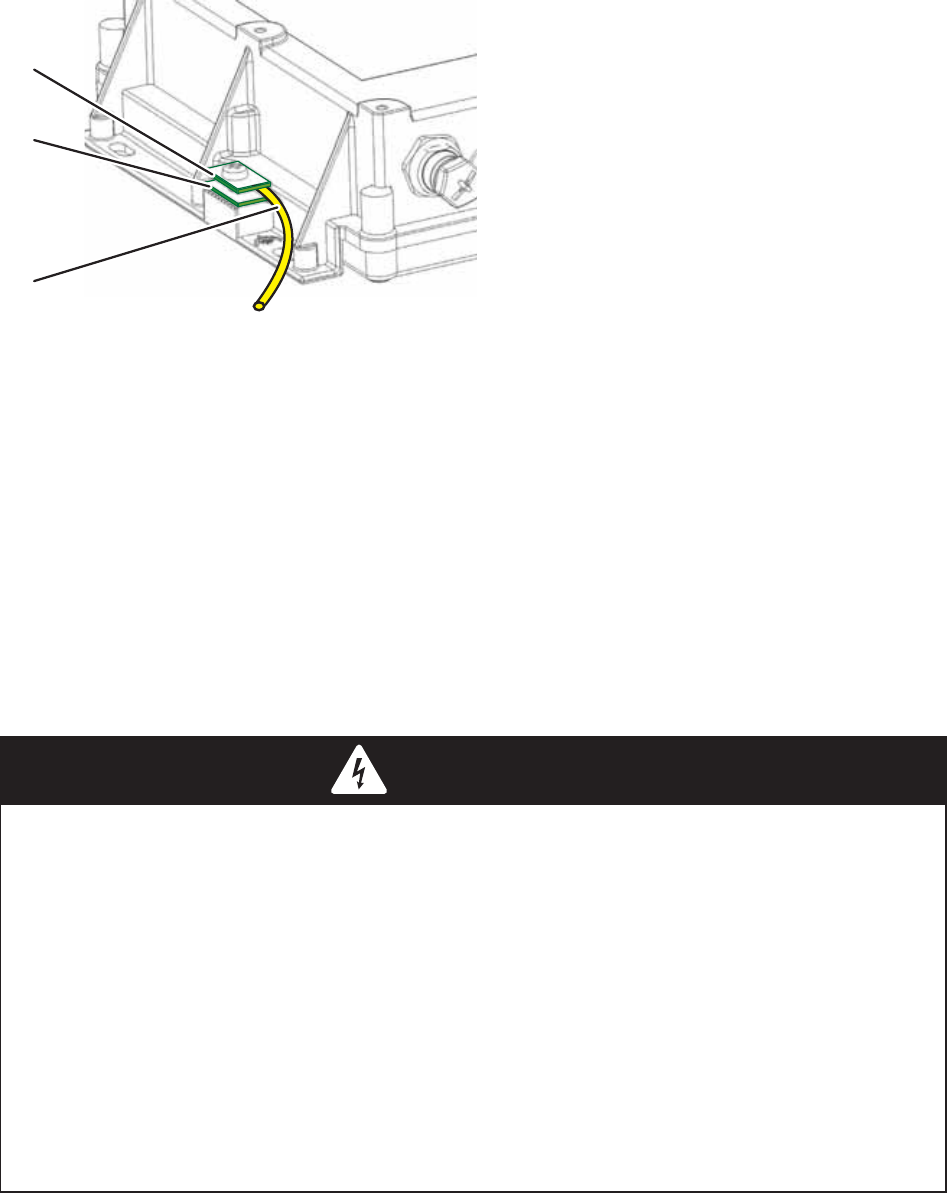
S1A31526 - Draft
- 8/2010 47
Figure 12: IP67 types ground connector
1 - Fastening plates for ground wire
2 - Ground wire
3.12.2 Rail / IP40 types
The lower panel of the device housing is grounded by means of the DIN rail.
3.13 Connecting the supply voltage
For redundant and outfall-resistant power, you can connect multiple power
sources in any combination at the same time. The device automatically
selects the power supply.
Note: Switch over to a redundant power supply may not be seamless. If the
power supply currently active is interrupted and another power supply takes
over, the device may reboot to activate the redundant power supply.
DANGER
HAZARD OF ELECTRIC SHOCK OR BURN
When the module is operated with direct plug-in power units, use only:
– SELV supply units that comply with IEC 60950/EN 60950 and
– (in USA and Canada) Class 2 power units that comply with applicable
national or regional electrical codes
Connect the ground wire to the PE terminal (where applicable) before you
establish any further connections. When you remove connections,
disconnect the ground wire last.
Failure to follow these instructions will result in death, serious injury,
or equipment damage.
1
2
1
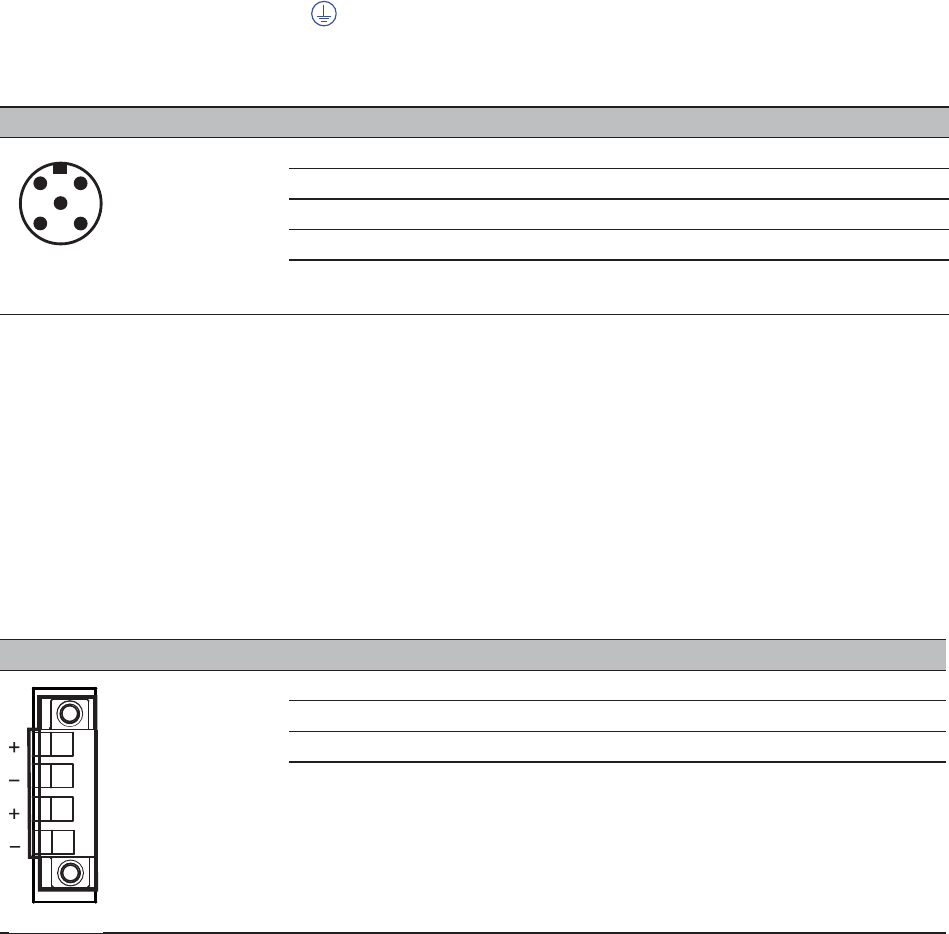
48 S1A31526 - Draft
- 8/2010
3.13.1 5-pin M12 connector (IP67 types)
A 5-pin M12 connector (A coding, supplied) is used to connect the power
supply.
On delivery, the connectors are sealed with cover caps.
The housing of the M12 frame connector is electrically connected to the
functional ground (FE) ( ) and to the metal housing of the device. The
supply voltage is electrically isolated from the housing.
3.13.2 4-pin terminal block (Rail-/IP40 types)
The supply voltage is connected via a 4-pin terminal block with a snap lock.
Redundant power supplies can be used. Both inputs are uncoupled. There is
no distributed load. With redundant supply, the power supply unit supplies
the device only with the higher output voltage. The supply voltage is
electrically isolated from the housing.
Figure Pin Function
1+ 24 V DC
20 V
30 V
4+ 24 V DC
5 N.C. (not used)
Table 10: Pin assignment of the 5-pin M12 connector on the IP67 types
Figure Pin Function
1 +24 + 24 V DC
20 0 V
3 +24 + 24 V DC
40 0 V
Table 11: Pin assignment of the 4-pin terminal block on the Rail-/IP40 types
43
21
5
Power
24V DC
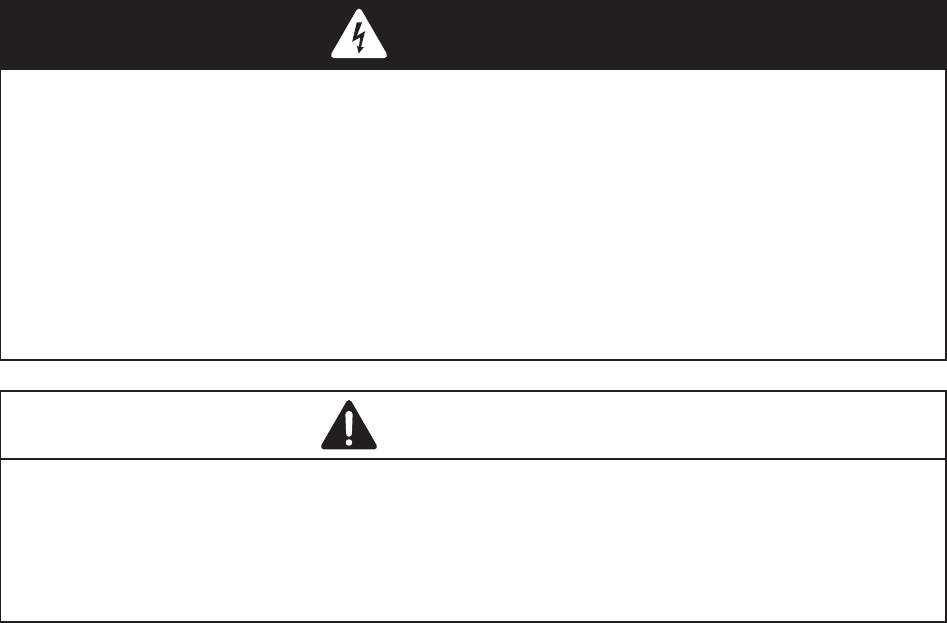
S1A31526 - Draft
- 8/2010 49
3.13.3 Power over Ethernet (PoE) -
power supply via the LAN cable
Schneider Electric Wireless Routers are prepared for the PoE (Power over
Ethernet) procedure and conform to the 802.3af standard. PoE-capable
network devices can be supplied with power via the LAN cable. This makes
it unnecessary to have a separate power supply for every base station, thus
considerably reducing the work involved in the installation.
In the IP67 types, the voltage is input via the wire pairs transmitting the signal
(IEEE 802.3af, mode A).
In the Rail-/IP40 types it is also possible to supply the voltage via the free wire
pairs.
The power supply to the LAN is input centrally, or via a PoE injector or a
power hub/power switch.
3.14 Connecting the data lines
3.14.1 10/100 Mbit/s twisted pair connection
In the IP67 types, the 10/100 Mbit/s twisted pair connectors are M12 sockets.
DANGER
HAZARD OF ELECTRIC SHOCK, EXPLOSION OR ARC FLASH
Remove the Ethernet cable that provides PoE to disconnect power before
installing or removing any hardware and cables.
Always use a properly rated voltage sensing device to confirm that power is
off.
Failure to follow these instructions will result in death, serious injury,
or equipment damage.
CAUTION
EQUIPMENT DAMAGE
In a PoE installation, use only devices that adhere to the 802.3af standard.
Failure to follow these instructions can result in injury or equipment
damage.

50 S1A31526 - Draft
- 8/2010
10/100 Mbit/s ports enable the connection of terminal devices or independent
network segments according to the IEEE 802.3 100BASE-TX / 10BASE-T
standard.
These ports support:
XAutonegotiation
XAutopolarity
XAutocrossing (if autonegotiation is activated)
X100 Mbit/s half-duplex mode, 100 Mbit/s full duplex mode
X10 Mbit/s half-duplex mode, 10 Mbit/s full duplex mode
State on delivery: autonegotiation activated.
The TP connector is a 4-pin M12 female connector with D coding.
On delivery, the connectors are sealed with cover caps.
The housing of the M12 socket is electrically connected to the functional
ground (FE) ( ) and to the metal housing of the device. The connector pins
are electrically separated from the functional ground and the metal housing.
Use a shielded CAT5 cable.
Use a shielded 4-pin M12 plug.
Connect the cable shield to the connector housing.
The patch cables for operating the device are shown in the following figure:
Figure Pin Function PoE voltage input
1 TD+ Transmit Data + V-
2 RD+ Receive Data + V+
3 TD- Transmit Data - V-
4 RD- Receive Data - V+
Housing: shield
Table 12: Pin assignment of a TP/TX interface (M12 socket)
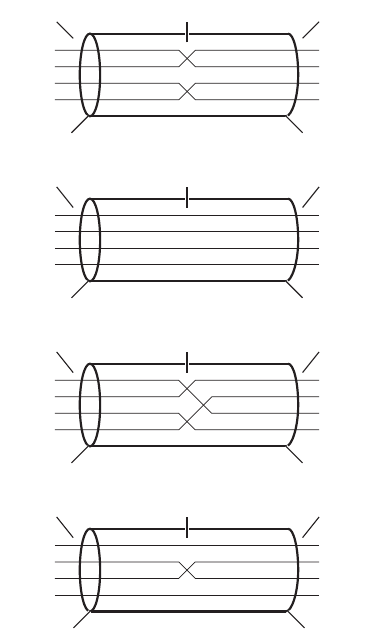
S1A31526 - Draft
- 8/2010 51
Figure 13: Patch cables for operating the device
(1) - Connection cables M12-4 on M12-4, crossed
(2) - Connection cables M12-4 on M12-4, 1 to 1
(3) - Connection cables M12-4 on RJ45, crossed
(4) - Connection cables M12-4 on RJ45, 1 to 1
(5) - M12 (MDI)
(6) - Shield
(7) - M12 (MDI)
(8) - M12 (MDI-X via autocrossing port)
(9) - RJ45, MDI (terminal device)
(10) - RJ45, MDI-X (Switch)
3.14.2 10/100 Mbit/s twisted pair connection
In the Rail-/IP40 types, the 10/100 Mbit/s twisted pair connectors are RJ45
sockets.
10/100 Mbit/s ports enable the connection of terminal devices or independent
network segments according to the IEEE 802.3 100BASE-TX / 10BASE-T
standard.
These ports support:
XAutonegotiation
XAutopolarity
XAutocrossing (if autonegotiation is activated)
X100 Mbit/s half-duplex mode, 100 Mbit/s full duplex mode
X10 Mbit/s half-duplex mode, 10 Mbit/s full duplex mode
RX+
TX+
RX-
TX-
1
2
3
4
TX+
RX+
TX-
RX-
1
2
3
4
TX+
RX+
TX-
RX-
1
2
3
4
TX+
RX+
TX-
RX-
1
2
3
4
TX+
TX-
RX+
RX-
1
2
3
6
TX+
RX+
TX-
RX-
1
2
3
4
RX+
RX-
TX+
TX-
1
2
3
6
TX+
RX+
TX-
RX-
1
2
3
4
(1)(5) (7)
(2)(5) (8)
(3)(5) (9)
(4)(5) (10)
(6) (6)
(6) (6)
(6) (6)
(6) (6)
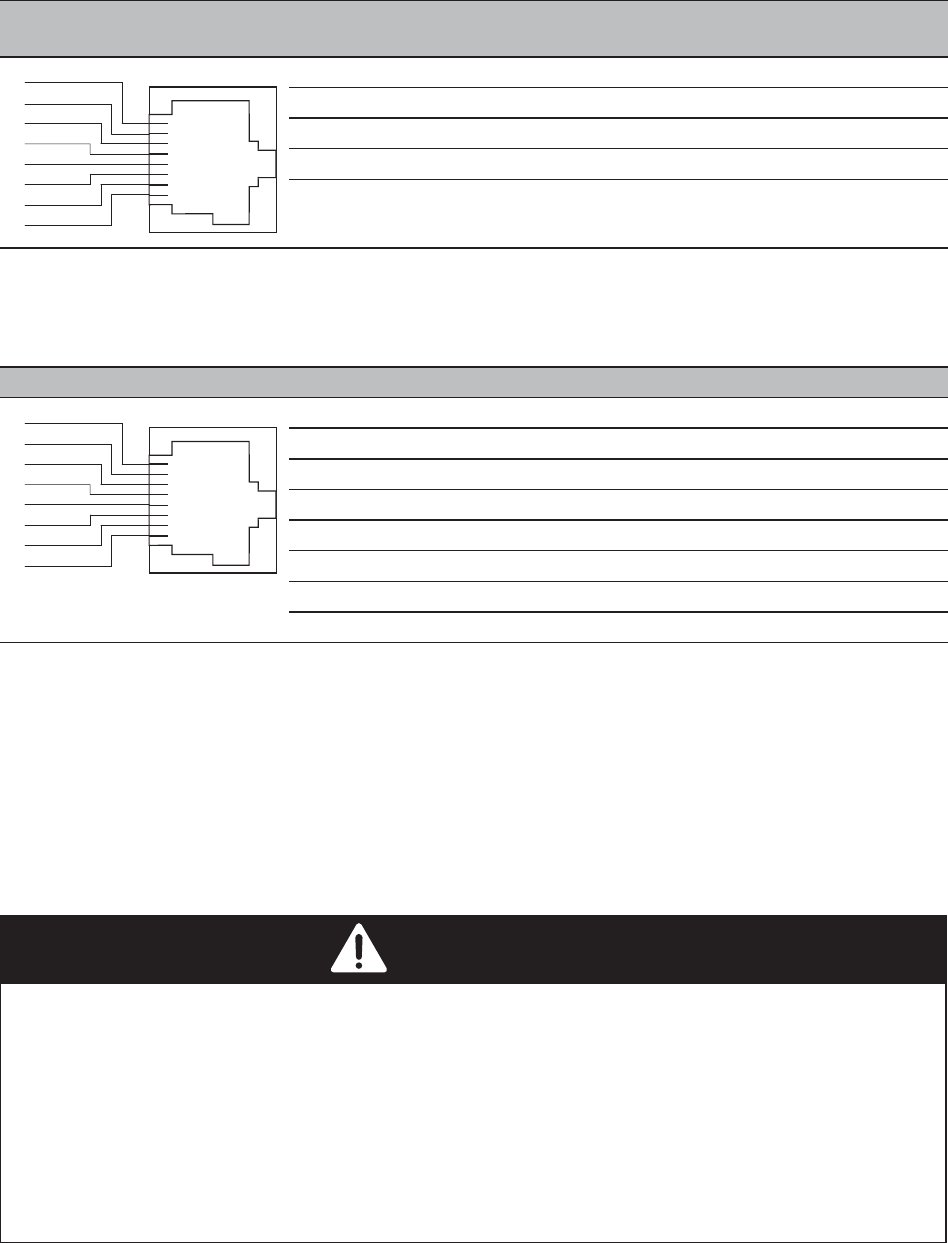
52 S1A31526 - Draft
- 8/2010
State on delivery: autonegotiation activated.
The socket housing is electrically connected to the bottom panel.
3.15 Installing the TCSNWA2A1 housing cover
Figure Pin Data PoE voltage input
1 RD+ Receive Data + V+
2 RD- Receive Data - V+
3 TD+ Transmit Data + V-
6 TD- Transmit Data - V-
4,5,7,8 Not used
Table 13: Pin assignment of a TP/TX interface in MDI-X mode, RJ45 socket. PoE
voltage input via the wire pairs transmitting the signal (phantom voltage).
Figure Pin Data PoE voltage input
1 RD+ Receive Data + —
2 RD- Receive Data - —
3 TD+ Transmit Data + —
4—— V-
5—— V-
6 TD- Transmit Data - —
7—— V+
8—— V+
Table 14: Pin assignment of a TP/TX interface in MDI-X mode, RJ45 socket. PoE
voltage input via the free line pairs (spare pairs).
DANGER
EXPLOSIVE ENVIRONMENT
Do not open this device or detach any connectors when the device is
electrically charged.
Do not remove the labeled housing cover.
Failure to follow these instructions will result in death, serious injury,
or equipment damage.
8
7
6
5
4
3
2
1
8
7
6
5
4
3
2
1
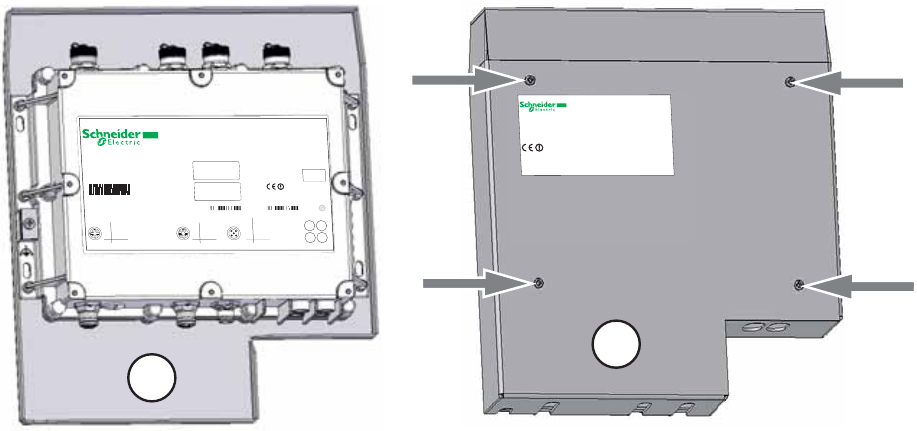
S1A31526 - Draft
- 8/2010 53
For use in hazardous environments, the TCSNWA2A1 device models have
an additional housing cover made of stainless sheet steel.
On delivery, the housing cover is pre-mounted.
Perform the installation in the following steps:
Remove the upper part of the housing cover on the device, as shown in
the following figure (point 1).
Do not remove the lower panel of the housing cover from the device.
Screw the device, including the lower panel of the housing cover, to the
mounting surface.
Set up the connections to the device.
Close the housing cover by replacing the upper part of the housing cover.
Fasten the housing cover with four screws, as shown in the following
figure (point 2).
Figure 14: Mounting the housing cover for TCSNWA2A1 device models with Ex
certification in accordance with ATEX 95 (ATEX 100a)
2.
1.
TCSNWA2A1
TCSNWA2A1
www.schneider-electric.com
DOM: YYWW Made in Germany
DO NOT OPEN WHEN ENERGIZED.
NICHT UNTER SPANNUNG ÖFFNEN.
8
II 3G Ex nA II T4 -20 °C ... +55 °C
KEMA 10 ATEX 0133 X
WiFi 802.11n AccessPoint IP67 ATEX
TCSNWA2A1
Modicon
c
N998
1 +24V DC
2 0V
3 0V
4 +24V DC
5 NC
Pin Function
4
3
21
5
4
1
23
1 TD +
2 RD +
3 TD -
4 RD -
Pin Function
4
1
23
1 TX
2 RX
3 N.C.
4 GND
Pin Function
Ethernet Power
LED
WLAN
1
WLAN
2
PLS/DA
Reset
V. 2 4
AUX1 AUX2Main2
Main1
IEC 61131-2
A
c
N998
Compatible to IEEE 802.3af, Mode A
MAC: xxxxxxxxxxxx
LAN
WLAN MAC 2
WLAN MAC 1
170 mA (PoE)
:
I
in
CLASS 2
:
U
in
48 VDC
420 mA:
I
in
CLASS 2
24 VDC
:
U
in
WiFi 802.11n AccessPoint IP67 ATEX
TCSNWA2A1
Modicon
ConneXium WiFi
PV: 01 RL: 00 SV: 08.00
DOM: YYWW Made in Germany
21054600500
21054600500
3 595864 105987
Complies with
IDA Standards
DB103239
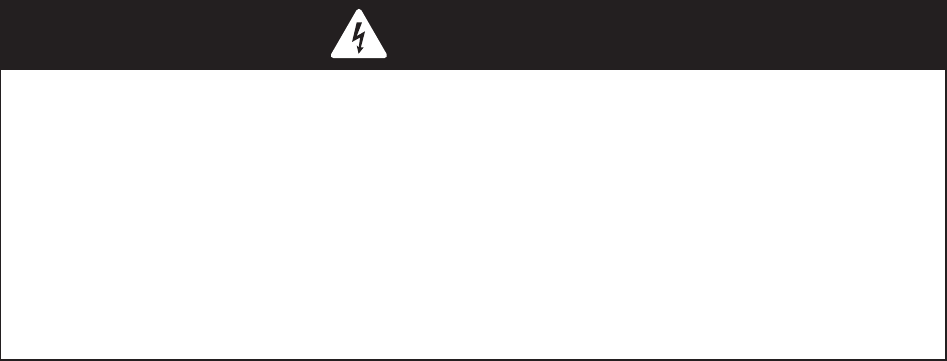
54 S1A31526 - Draft
- 8/2010
3.16 Startup procedure
3.16.1 IP67 types
Connecting the voltage supply via the 5-pin M12 connector or via the LAN
cable (Power over Ethernet) starts the operation of the device.
3.16.2 Rail / IP40 types
At a minimum, every access point/client requires at least 1 wired connection
– for power. Power can be connected in 3 ways:
XFrom one or two 24 V DC power supplies mounted near the access point
to the 4-pin 24 V DC terminal block on the WiFi device.
XFrom a 12 V DC power source to the 12V DC connector on the bottom left
of the WiFi device.
XVia power over Ethernet (PoE) from an Ethernet cable connected to one
of the ETH ports on the access point/client.
The power connections are redundant. You can use more than one
connection scheme. For example, if you are powering an unmanned remote
station with 24 V DC power supplies, you could additionally connect a battery
to the 12V DC pin connector as a back up the system in the event of a power
failure.
When you are planning the placement of access points/clients at your
site, make sure that you consider the availablity of power sources and
their proximity to the access points/clients as part of your plan.
XIf you plan to use 12 or 24 VDC power supplies, you need to install
your access points/clients in areas where electrical power outlets are
available.
XIf you decide to use PoE, placing the access points/clients close to the
Ethernet cabinet will reduce voltage loss in the cable run.
DANGER
HAZARD OF ELECTRIC SHOCK, EXPLOSION OR ARC FLASH
Remove the Ethernet cable that provides PoE to disconnect power before
installing or removing any hardware and cables.
Always use a properly rated voltage sensing device to confirm that power is
off.
Failure to follow these instructions will result in death, serious injury,
or equipment damage.
S1A31526 - Draft
- 8/2010 55
Note: Whenever an access point/client is making a wired Ethernet
connection, the maximum distance between the access point/client and the
Ethernet cabinet is 100 m (328 ft). If you plan to use PoE, the distance should
be much shorter; a significant amount of power will be lost over a 100 m
(328 ft) cable run.
3.17 Finding and configuring devices
Apply power to the device before starting the computer for the configuration.
ConneXium WiFi devices can be configured in the following ways (if the
model is equipped with the corresponding interface):
XVia the local network (LAN).
XVia the radio network (WLAN), if the WLAN encryption (e.g. WPA2) in a
device with a wireless interface and in the configuration computer is set
or deactivated respectively.
XVia the serial configuration interface.
Refer to ”ConneXium WiFi TCSG,TSCN Configuration and Administration
Guide” on the CD ROM for more details.
3.18 Installing external antennas
External antennas are required to operate the access point.
You will find an overview of the antennas that are supported and can be
connected, along with the corresponding technical data, at www.schneider-
electric.com.
When installing external antennas, adhere to the regulations of the
country in which you are operating the WLAN device, and to the general
operating permission and the maximum emission levels.
Transmission power
The operator of a WLAN radio installation must adhere to the applicable
transmission threshold values.
Use the LANconfig or the Webconfig to start the configuration of the
device. (This software is located on the CD provided.)
Go to the settings for Wireless LAN.
Enter the country in which you are installing the device (see the
following figure):
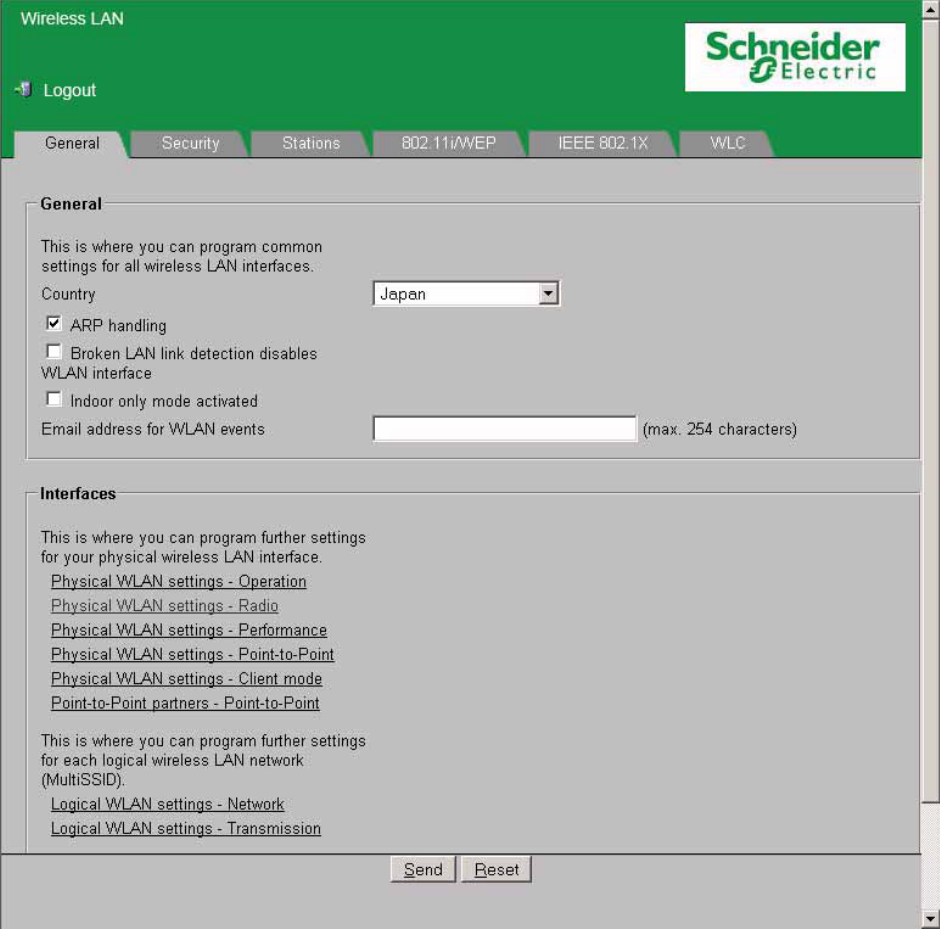
56 S1A31526 - Draft
- 8/2010
Open the configuration for the physical interface to which you are
connecting the antenna. On the Radio tab you will find an entry field
for the antenna gain (see the following figure):
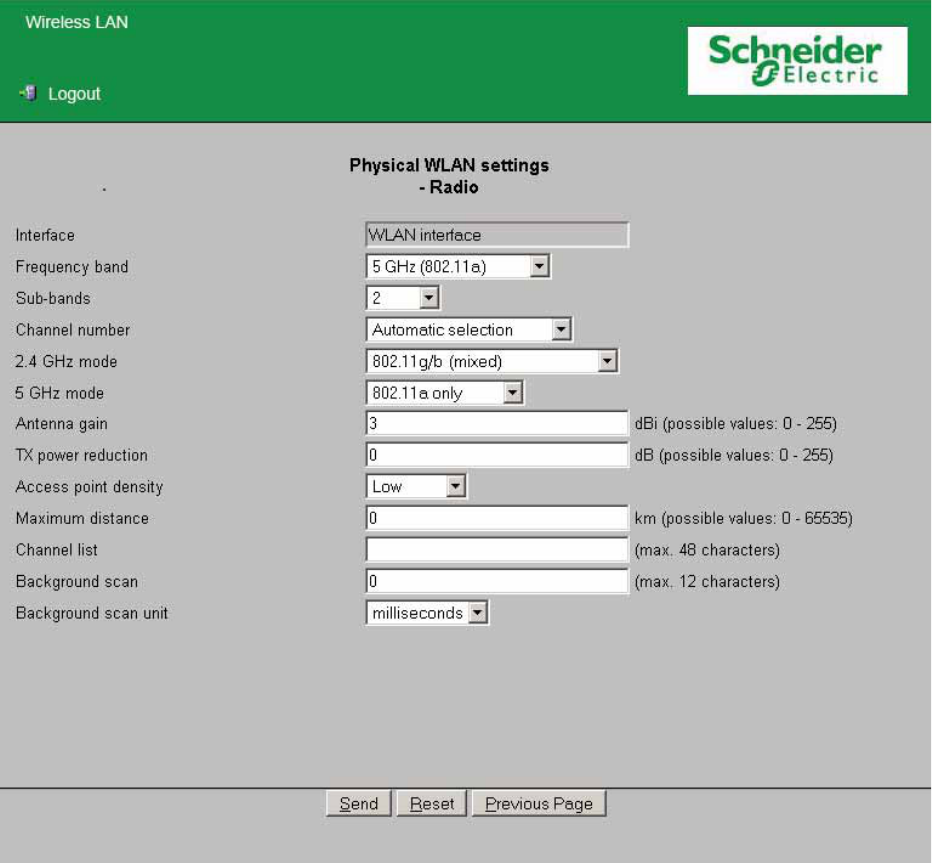
S1A31526 - Draft
- 8/2010 57
Subtract the cable attenuation and any losses due to over voltage
protector installed devices from the antenna gain, and enter the result
in dB in the antenna gain field.
3.19 Display elements
After the operating voltage is applied, the software starts and initializes itself.
The device then performs a self-test. During this process, the LEDs light up.
The process takes a number of seconds.
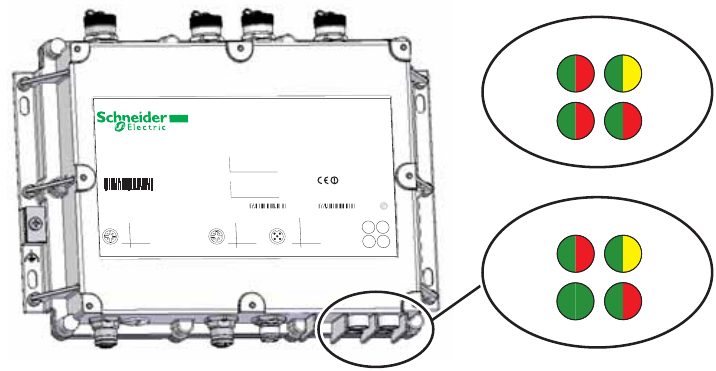
58 S1A31526 - Draft
- 8/2010
Figure 15: Display elements for the TCSGWA272,TCSNWA271 and TCSNWA2A1
1 - P (Power)
2 - LS/DA (Ethernet port link status/data)
3 - WLAN 1
4 - WLAN 2
5 - NC
TCSNWA271
LS/DAP
WLAN
NC
TCSGWA272
LS/DAP
WLAN
2
WLAN
1
1
3
2
4
1
5
2
3
TCSGWA272
1 +24V DC
2 0V
3 0V
4 +24V DC
5 NC
Pin Function
4
3
21
5
4
1
23
1 TD +
2 RD +
3 TD -
4 RD -
Pin Function
4
1
23
1 TX
2 RX
3 N.C.
4 GND
Pin Function
Ethernet Power
LED
WLAN
1
WLAN
2
PLS/DA
ResetV. 2 4
AUX1 AUX2Main2
Main1
IEC 61131-2
A
c
N998
Compatible to IEEE 802.3af, Mode A
MAC: xxxxxxxxxxxx
LAN
WLAN MAC 2
WLAN MAC 1
170 mA (PoE):
I
in
CLASS 2
:
U
in
48 VDC
420 mA
:
I
in
CLASS 2
24 VDC
:
U
in
WiFi 802.11g AccessPoint IP67
Modicon
ConneXium WiFi
PV: 01 RL: 00 SV: 08.00
DOM: YYWW Made in Germany
21054600500
21054600500
3 595864 105956
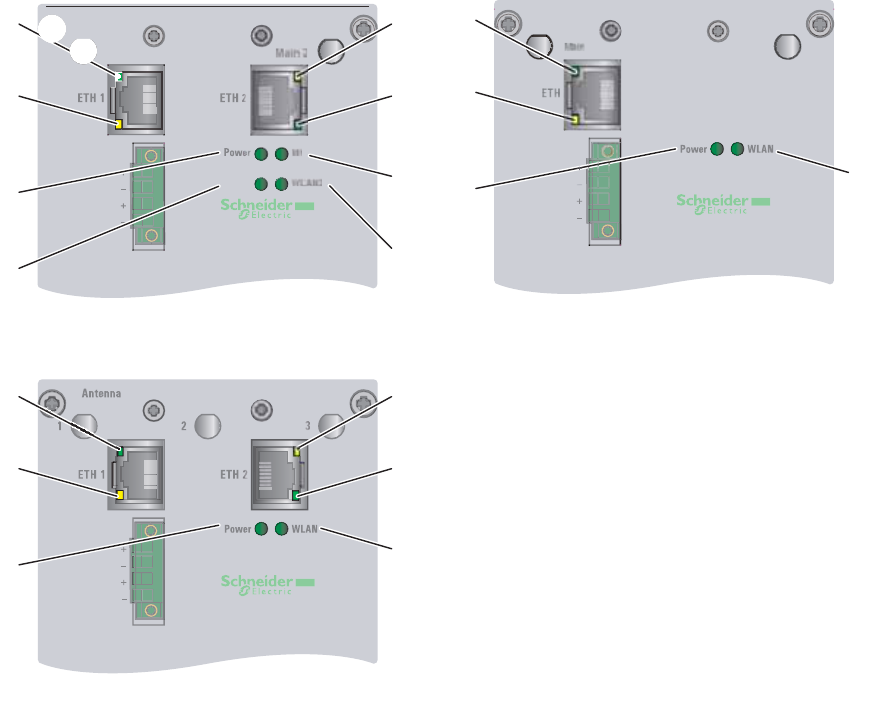
S1A31526 - Draft
- 8/2010 59
Figure 16: Display elements for TCSGWA242, TCSGWC241, TCSNWA241 and
TCSNWA241F
1 - Ethernet port link status (LS)
2 - Ethernet port data (DA)
3 - Power (P)
4 - WLAN1
5 - WLAN2
6 - M1
Meaning of the LEDs
The behavior of the LEDs is described below:
XBlinking means that the LED switches on and off at regular intervals
in the color specified.
XFlashing means that the LED lights up very briefly in the color
specified, then is switched off for a much longer time (about 10x as
long).
XFlashing inversely means the reverse. Here the LED is on for a long
period in the color specified and is only briefly interrupted.
XFlickering means that the LED switches on and off at irregular
intervals.
TCSGWA242
TCSNWA241
TCSGWC241
ConneXium WiFi
W
LAN
1
M
a
in 1
2
4V D
C
Au
x
C
onneXium WiF
i
24V D
C
C
onneXium WiFi
24V D
C
3
4
6
2
1
2
1
5
3
2
1
2
1
4
34
2
1
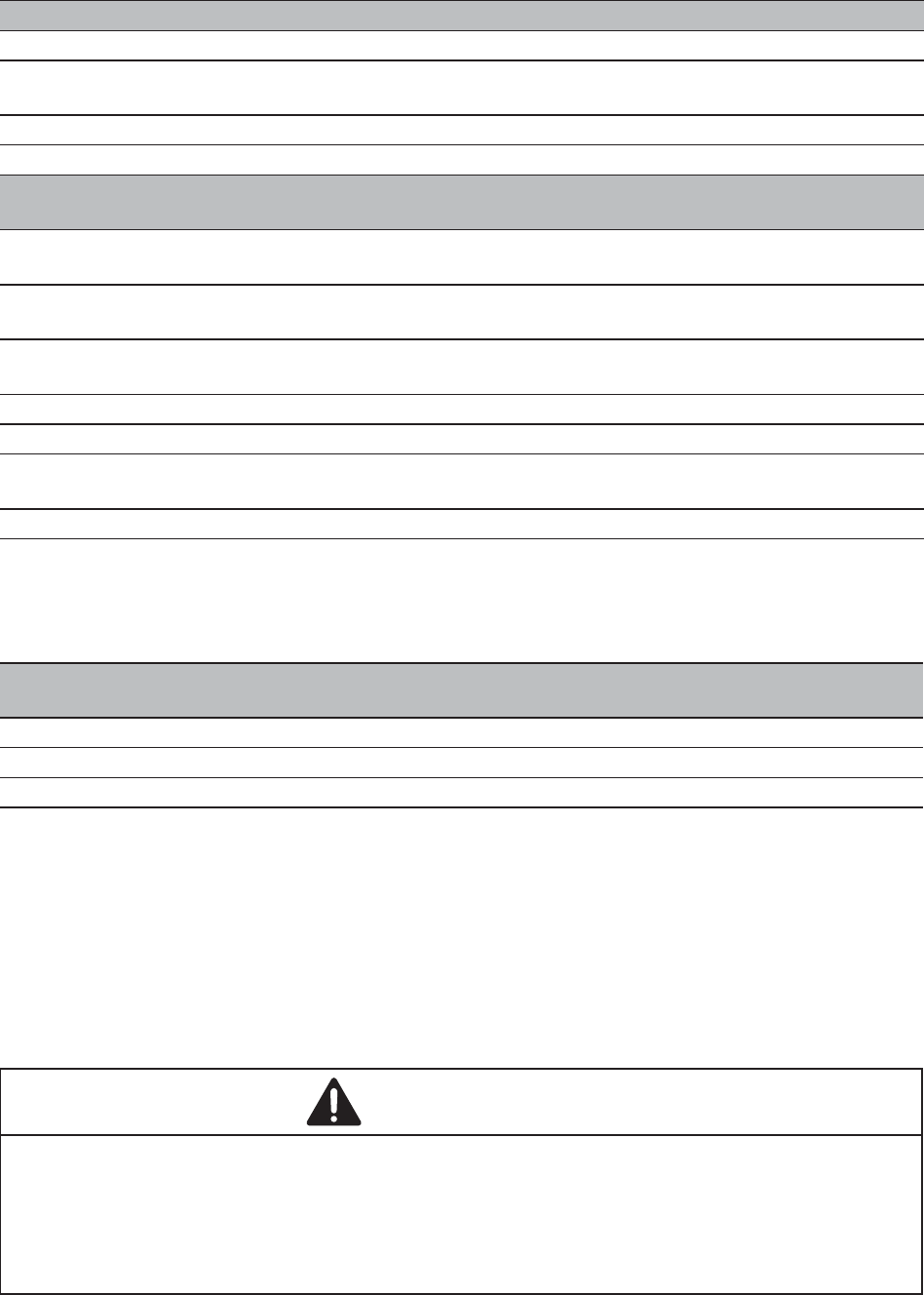
60 S1A31526 - Draft
- 8/2010
Device status
The LEDs shown in the table below provide information about conditions
which affect the operation of the entire device.
Port Status - Ethernet Port
These LEDs display port-related information.
3.20 Operation element (reset button)
In the ConneXium WiFi family devices, the operating elements include a
reset button.
P (green/red LED) Power
Green on continuously Device is ready for operation.
Red blinking (slowly) Charge lock active (see „Dual-Band Industrial Access Point /
Access Client / Access Bridge TCSGWA242” user manual).
Green/red blinking (quickly) Unprotected configuration (no password set).
Red blinking (quickly) Hardware error detected.
WLAN 1, WLAN 2
(green/red LEDs)
WLAN connection and WLAN data traffic
of internal WLAN modules
Off No WLAN network defined or WLAN module deactivated. No
beacons sent from the WLAN module.
Green At least one WLAN network defined and WLAN module
activated. Beacons sent from the WLAN module.
Green flashing inversely Number of flashes = number of connected WLAN stations and
P2P radio lines, followed by a break in connection.
Green blinking DFS scanning or another scan procedure.
Green flickering TX data traffic.
Red flickering Error detected in WLAN (e.g. transmission lost due to bad
connection).
Red blinking Hardware error detected in WLAN module.
LS/DA
(green/yellow LED)
Data, link status
Status of the LAN interfaces
Off No network device connected
Green on continuously Ethernet connection active
Yellow flickering Data traffic
WARNING
LOSS OF CONFIGURATION DATA
Do not push the reset button while the access point is in operation.
Failure to follow these instructions can result in death, serious injury,
or equipment damage.
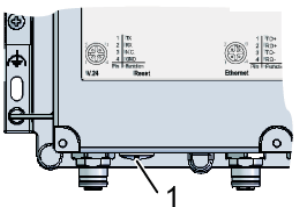
S1A31526 - Draft
- 8/2010 61
3.20.1 Functions
The reset button has two different functions, which are triggered by pressing
the button for different lengths of time:
XResetting the configuration (hard reset) – the button is pressed for
more than 5 seconds but less than 10 seconds. All LEDs on the device
light up continuously. When the reset button is released, the device
restarts with the factory settings.
The hard reset can be used, for example, if you have to reconfigure the
device independently of any existing settings, or if no connection to the
device configuration can be made.
Note: Save the current configuration of the device before the reset. After a
hard reset, the device restarts in the unconfigured state, and all the settings
are lost.
XDevice restart (soft reset) – the button is pressed for less than 5 seconds
or more than 10 seconds. The device restarts.
3.20.2 IP67 types
In the IP67 types, the reset button (see #1 in the following figure) can be
accessed from outside the housing cover via a locking screw.
On delivery, the reset button is closed off with a screwed-on cover cap
(protection class IP67).
When you want to use the reset button, remove the cover cap.
Note: After pressing the reset button, replace the cover cap. Protection class
IP67 is only achieved when the cover cap is closed.
3.20.3 Rail / IP40 types
In the Rail-/IP40 types, the reset button (see #1 in the following figure) is
located on the front plate of the device.
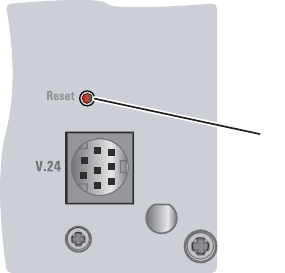
62 S1A31526 - Draft
- 8/2010
Figure 17: Reset button on Rail-/IP40 types
T
CSG
WA24
2
A
u
x2
1
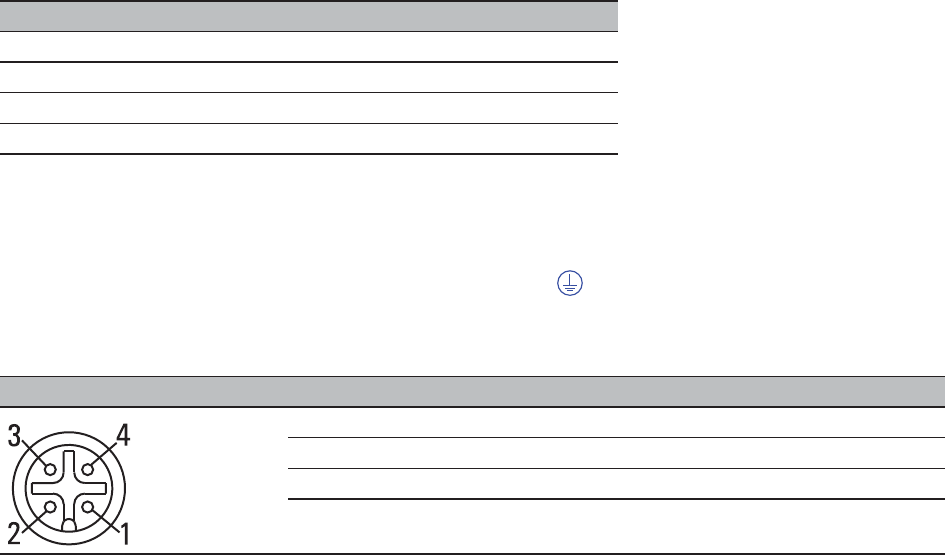
S1A31526 - Draft
- 8/2010 63
3.21 Basic set-up
Information on the basic settings of the device can be found in the
”ConneXium WiFi TCSG,TSCN Configuration and Administration Guide” on
the CD ROM.
Default settings
You will find information on the delivery state of the device in the
”ConneXium WiFi TCSG,TSCN Configuration and Administration Guide”
on the CD ROM.
V.24 interface (external management)
At the V.24 connector, a serial interface is provided for the local
connection of an external management station (VT100 terminal or PC
with corresponding terminal emulation) or a Memory Back-up Adapter
TCSWAMCD (M12) or TCSWAMC67 (miniDin). This enables you to set
up a connection to the Command Line Interface (CLI) and to the system
monitor.
The connector is a 4-pin M12 female connector with A coding.
On delivery, the connector is sealed with a cover cap.
The housing of the M12 socket and the signal connectors are electrically
connected to the functional ground (FE) ( ) and to the metal housing of
the device.
VT 100 terminal settings
Data 8 bit
Stopbit 1 bit
Handshake off
Parity none
Figure Pin Function
1 TX Transmit data
2 RX Receive data
3 N.C. Not connected
4 GND Ground
Table 15: Pin assignment of the V.24 interface for IP67 types (M12 socket)
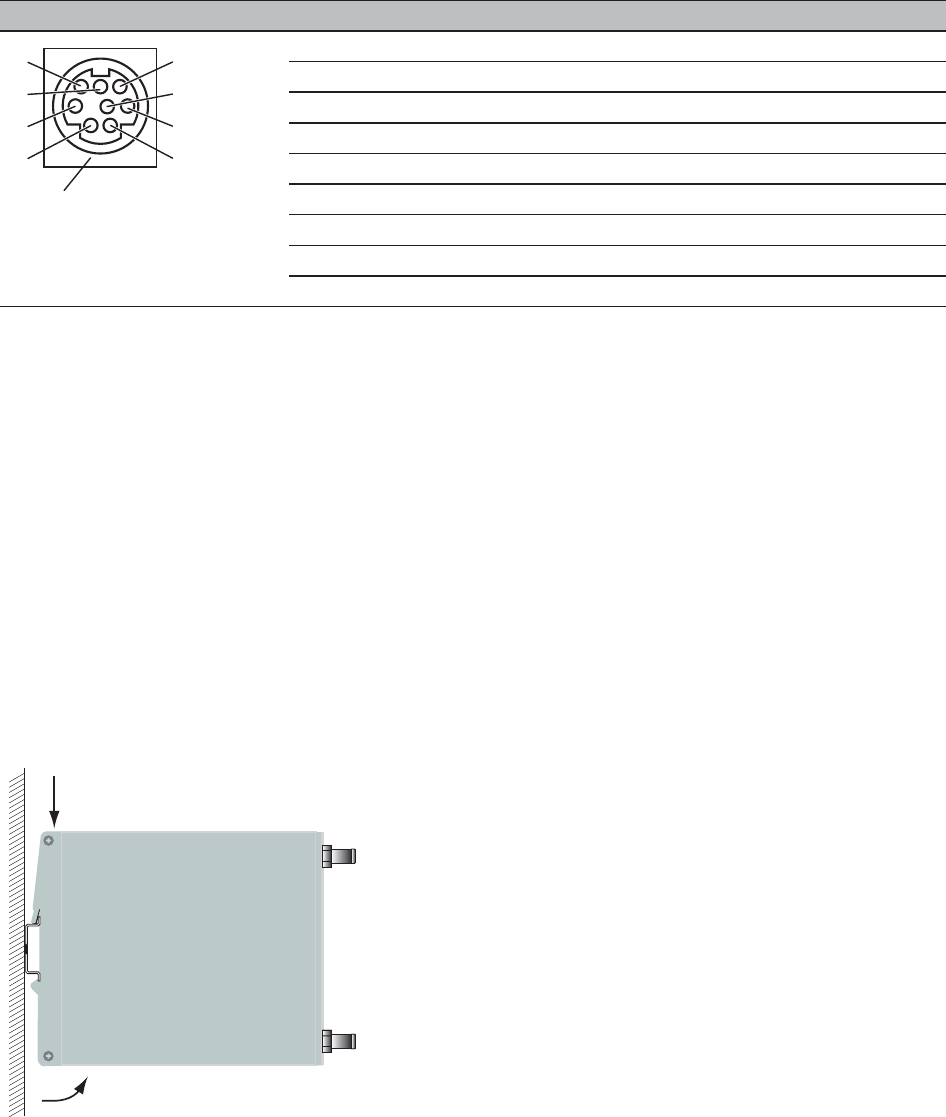
64 S1A31526 - Draft
- 8/2010
Note: You will find the order number for the terminal cable, which is
ordered separately, in the ”Technical Data” chapter (see on page 65
“Technical data“).
3.22 Disassembly
To remove the device from the DIN rail, press the device downwards and
pull it out from under the DIN rail.
Figure 18: Removal from the DIN rail
Figure Pin Function
1 CTS Clear to send
2 RTS Request to send
3 RxD Receive data
4 RI Ring indicator
5 TxD Transmit data
6 DSR Dataset ready
7 DCD Data carrier detect
8 DTR Data terminal ready
U GND Ground
Table 16: Pin assignment of the V.24 interface for Rail-/IP40 types (miniDin socket)
1
6
3
4
2
8
5
7
U
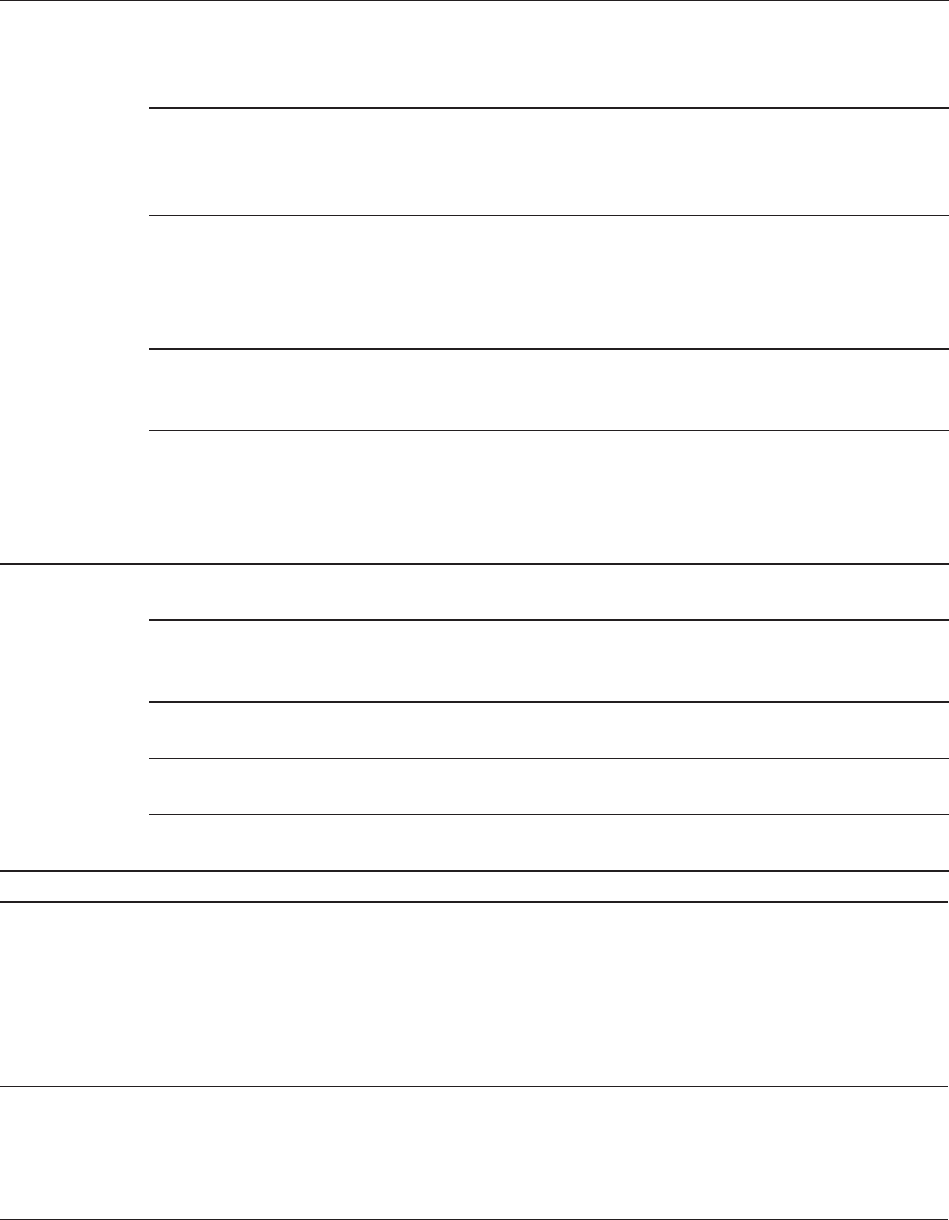
S1A31526 - Draft
- 8/2010 65
4 Technical data
General technical data
Description TCSGWA242
TCSGWC241
TCSGWA242F
TCSGWA272
Dual-band ConneXium WiFi access point/client in
accordance with IEEE 802.11a/b/g/h and IEEE 802.11i
TCSNWA241
TCSNWA241F
TCSNWA271
TCSNWA271F
Dual-band industrial high-performance wireless LAN access
point/client in accordance with IEEE 802.11a/b/g/h and
802.11n (draft 2.0)
TCSGWA242
TCSGWC241
TCSGWA242F
TCSNWA241
TCSNWA241F
Used on DIN rail, 5-way (4-way for TCSGWC241) redundant
power supply, vibration-resistant metal housing
TCSGWA272
TCSNWA271
TCSNWA271F
Mounted on pole or flat surface, protection class IP67
TCSNWA2A1 Dual-band industrial high-performance wireless LAN access
point/client in accordance with IEEE 802.11a/b/g/h and
802.11n (draft 2.0)
Mounted on pole or flat surface, protection class IP67 and
ATEX (not FCC-compliant)
Port type and
number
TCSGWA272 2 x WLAN interfaces, up to 8 SSIDs per WLAN interface,
1 x LAN port 10/100BASE-TX, Autosensing
TCSNWA271
TCSNWA2A1
TCSNWA271F
1 x WLAN interface, up to 8 SSIDs per WLAN interface,
1 x LAN port 10/100BASE-TX, Autosensing
TCSGWA242
TCSGWA242F
2 x WLAN interfaces, up to 8 SSIDs per WLAN interface,
2 x LAN ports 10/100BASE-TX, Autosensing
TCSGWC241 1 x WLAN interface,
1 x LAN port 10/100BASE-TX, Autosensing
TCSNWA241
TCSNWA241F
1 x WLAN interface, up to 8 SSIDs per WLAN interface,
2 x LAN ports 10/100BASE-TX, Autosensing
Dimensions
W x H x D
TCSGWA272, TCSNWA271,
TCSNWA271F, TCSGWA242,
TCSNWA2A1
TCSGWC241, TCSGWA242F,
TCSNWA241, TCSNWA241F
261 mm x 56 mm x 212 mm
(10.28 in x 2.20 in x 8.35 in)
273 mm x 59 mm x 310 mm
(10.75 in x 2.32 in x 12.21 in)
80 mm x 100 mm x 135 mm
(3.15 in x 3.94 in x 5.32 in)
Weight TCSGWA272, TCSNWA271,
TCSNWA271F, TCSGWA242,
TCSNWA2A1
TCSGWC241, TCSGWA242F,
TCSNWA241, TCSNWA241F
approx. 2000 g (4.41 lb)
approx. 5200 g (11.47 lb)
approx. 770 g (1.70 lb)
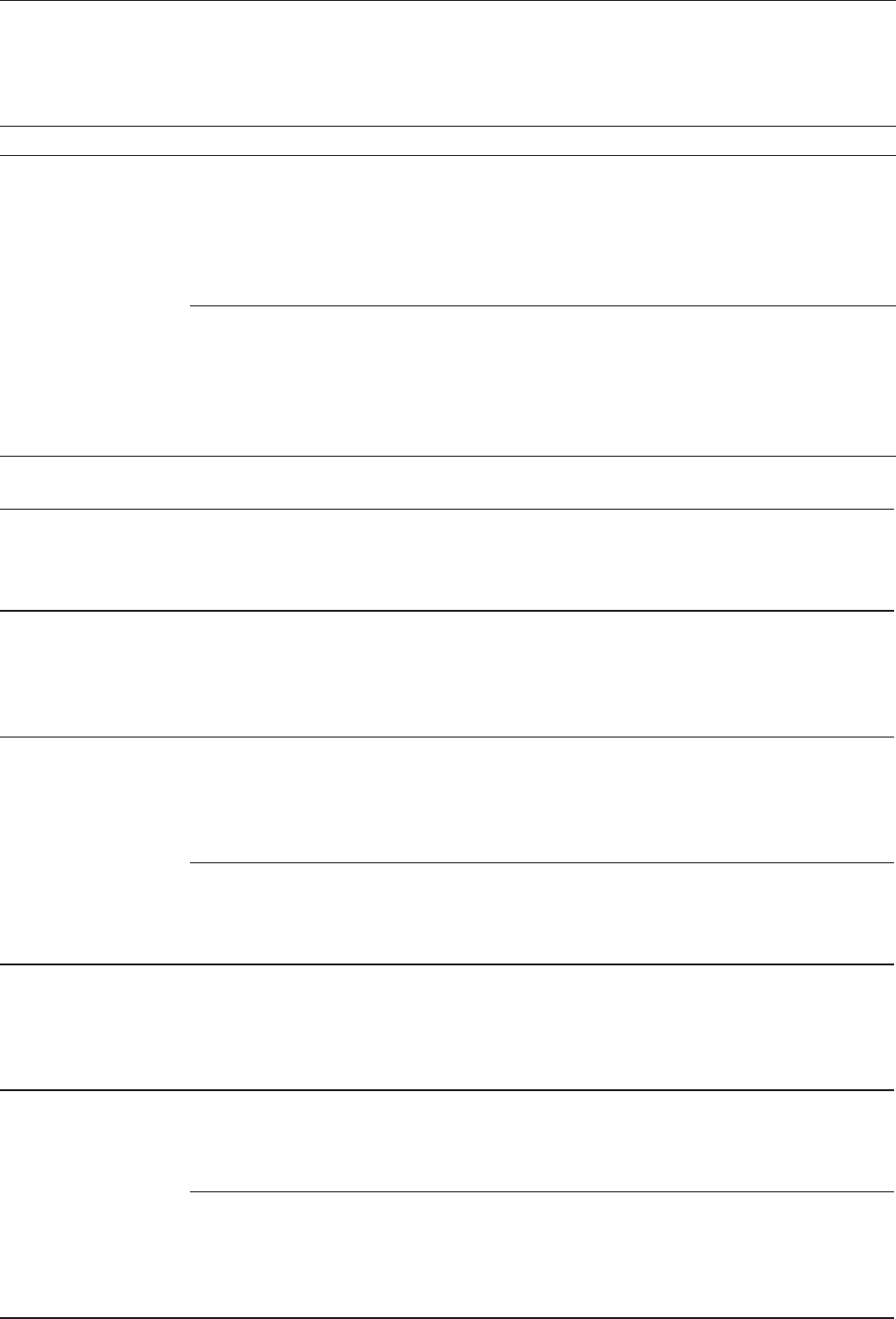
66 S1A31526 - Draft
- 8/2010
Mounting TCSGWA272, TCSNWA271,
TCSNWA2A1, TCSNWA271F,
TCSGWA242,
TCSGWC241, TCSGWA242F,
TCSNWA241, TCSNWA241F
Flat surface and pole mounting
DIN rail and flat surface mounting
Power supply
Operating voltage
TCSGWA272
TCSNWA271
TCSNWA2A1
TCSNWA271F
2 x 24 VDC -20% to + 25%
at 5-pin power plug
Power over Ethernet according to IEEE802.3af,
Mode A, Class 0: + 36 VDC to 57 VDC / max. 8.2 W at
Ethernet socket
All power supplies redundant
TCSGWA242
TCSGWC241
TCSGWA242F
TCSNWA241
TCSNWA241F
2 x 24 V DC; 12 V DC with suitable external AC power
supply
2 x (1 x for TCSGWC241) Power over Ethernet
according to IEEE 802.3af
All power supplies redundant
Overload current
protection at input
Non-replaceable fuse
Insulation voltage
between operating
voltage connectors
and housing
800 V DC
Protective elements limit the insulation voltage to
45 V DC.
Environment Storage temperature
(ambient air
temperature)
Humidity
Atmospheric pressure
-30 °C to +70 °C ( -22 °F to +158 °F)
10% to 95% (non-condensing)
up to 2,000 m (795 hPa)
Operating
temperature
TCSGWA242
TCSGWC241
TCSGWA242F
TCSNWA241
TCSNWA241F
Ambient air -30 °C to +50 °C (-22 °F to +122 °F)
(temporarily up to +70 °C (+158 °F) according
to EN50155)
TCSGWA272
TCSNWA271
TCSNWA2A1
TCSNWA271F
Ambient air -30 °C to +55 °C (-22 °F to +131 °F)
(temporarily up to +70 °C (+158 °F) according to
EN50155)
Pollution degree TCSGWA242
TCSGWC241
TCSGWA242F
TCSNWA241
TCSNWA241F
2
Protection class TCSGWA272
TCSNWA271
TCSNWA2A1
TCSNWA271F
IP 67
Sturdy metal housing, designed for flat surface
and pole mounting
TCSGWA242
TCSGWC241
TCSGWA242F
TCSNWA241
TCSNWA241F
IP 40
Sturdy metal housing, designed for DIN rail and
flat surface mounting
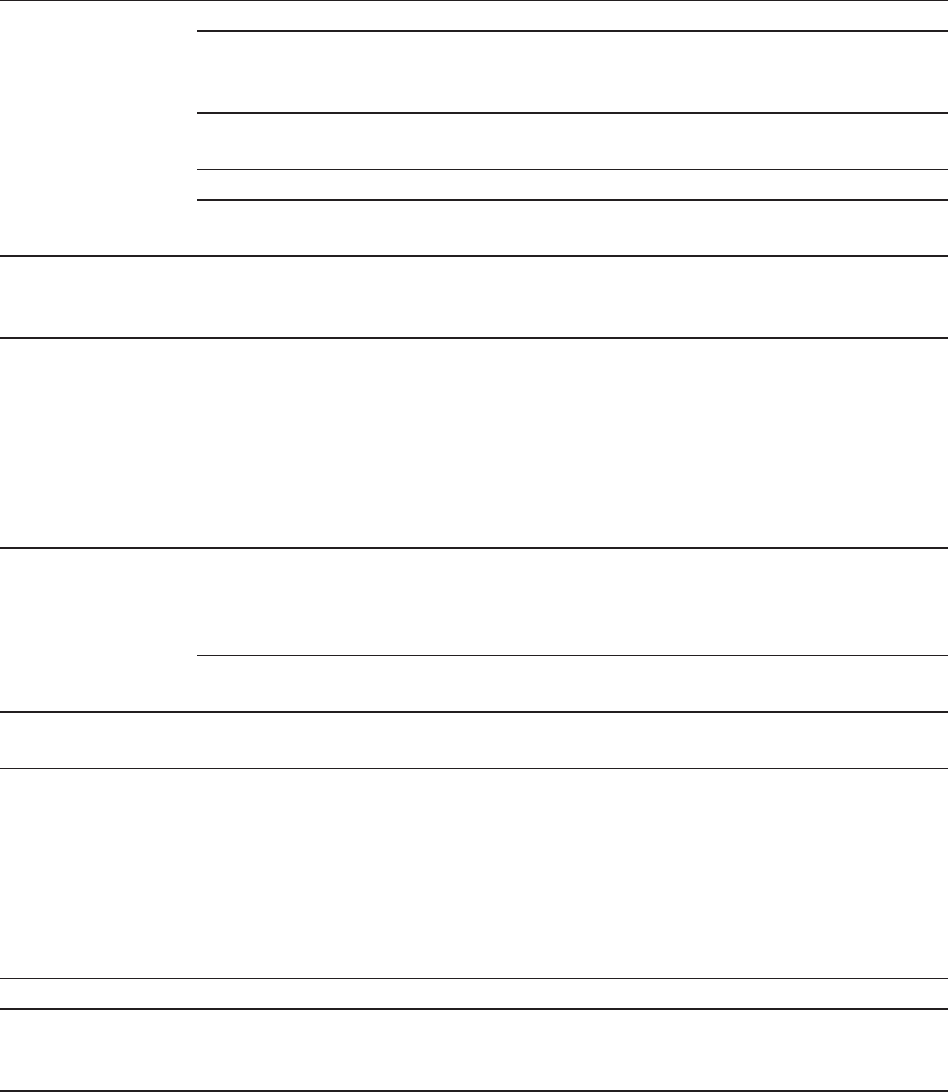
S1A31526 - Draft
- 8/2010 67
Radio technology
Antenna connector TCSGWA272 Four antenna connectors (2 main and 2 aux.)
TCSNWA271
TCSNWA2A1
TCSNWA271F
Three antenna connectors
TCSGWA242
TCSGWA242F
Four Reverse SMA connectors (sockets)
TCSGWC241 Two Reverse SMA connectors (sockets)
TCSNWA241
TCSNWA241F
Three Reverse SMA connectors (sockets)
Range ConneXium
WiFi device
Up to 20 km (12.4 miles) with external antennas
(depending on antenna used, frequency range and data
rate)
Encryption ConneXium
WiFi device
IEEE802.11i/WPA2 with passphrase or 802.1x and
hardware-accelerated AES, user authentication with
802.1x/EAP or LEPS, IEEE 802.1x supplicant in client
mode, WPA/TKIP, WEP, access control lists, WLAN port
and protocol filters, RADIUS client and server, built-in
firewall with QoS, port filter, protocol filter, IDS and DoS
protection, PMK caching and pre-authentication for fast
roaming with IEEE802.1x
Frequency range TCSGWA242
TCSGWC241
TCSGWA242F
TCSGWA272
2 x (1 x for BAT-Client types) independent radio modules,
each 2.4 GHz and 5 GHz: 2400-2483.5 MHz (ISM) and
5170-5810 MHz
TCSNWA… 1 x radio module, supported by 2.4 GHz and 5 GHz: 2400-
2483.5 MHz (ISM) and 5170-5850 MHz
Modulation
technology
ConneXium
WiFi device
22M0F7D (DSSS/OFDM) at 2.4 GHz
20M0G7D (OFDM) at 5 GHz
Radio topology TCSGWA272
TCSNWA271
TCSNWA2A1
TCSNWA271F
TCSGWA242
TCSGWA242F
TCSNWA241
TCSNWA241F
WLAN access point, bridge, router, point-to-point, client,
client-bridge mode, fixed mesh with RSTP
TCSGWC241 WLAN client, client-bridge mode
Roaming ConneXium
WiFi device
Seamless handover, IAPP support, IEEE802.11d support,
background scanning for rogue AP detection and fast
roaming
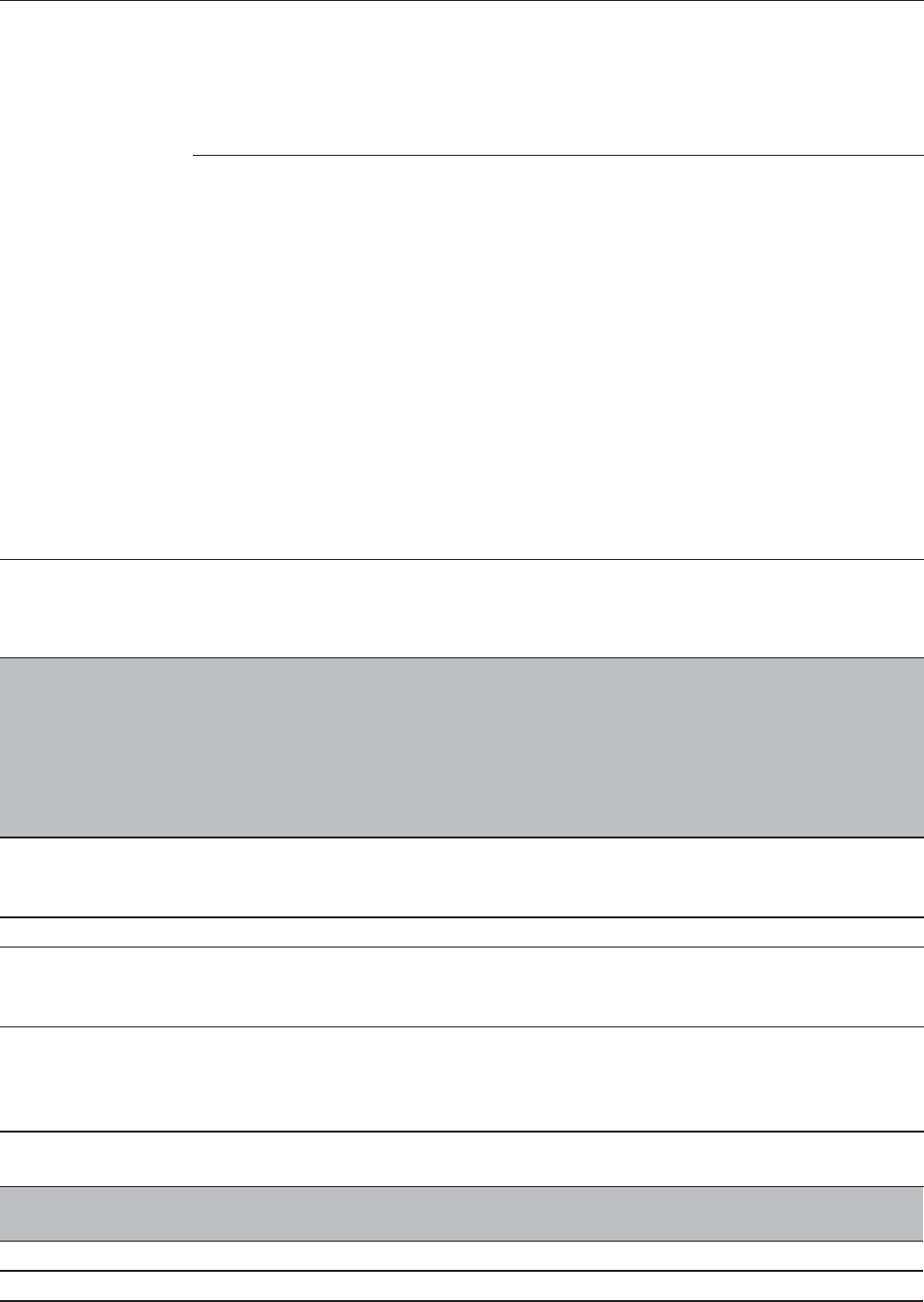
68 S1A31526 - Draft
- 8/2010
EMC
Transmission
power
TCSGWA242
TCSGWC241
TCSGWA242F
TCSGWA272
2.4 GHz 802.11b: +19 dBm @1 and 2 Mbit/s, +19 dBm @
5.5 and 11 Mbit/s, 2.4 GHz 802.11g: +19 dBm @ 6 Mbit/s,
+14 dBm @ 54 Mbit/s,
5 GHz 802.11a/h:+18 dBm @ 6 Mbit/s, +12 dBm @ 54
Mbit/s with TPC and DFS, transmission power reduction in
1 dB steps to minimum 0.5 dBm
TCSNWA… max. 2.4 GHz 802.11b: +19 dBm @ 1 and 2 MBit/s, +19
dBm @ 5.5 and 11 MBit/s (power output at antenna input);
max. 2.4 GHz power output at antenna input 802.11g: +18
dBm @ 6 to 36 MBit/s, +17 dBm @ 48 MBit/s, +16 dBm @
54 MBit/s; 802.11n: +19 dBm @ 6.5/13 MBit/s (MCS0/8,
20 MHz), +10 dBm @ 65/130 MBit/s (MCS7/15, 20 MHz),
+17 dBm @ 15/30 MBit/ s (MCS0/8, 40 MHz), +10 dBm @
150/300 MBit/s (MCS7/15, 40 MHz);
max. 5 GHz power output at antenna input 802.11a/h: +18
dBm @ 6 to 24 MBit/s, +17 dBm @ 36 MBit/s, +16 dBm @
48 MBit/s, +15 dBm @ 54 MBit/s; 802.11n: +18 dBm @
6.5/13 MBit/s (MCS0/8, 20 MHz), +10 dBm @ 65/130
MBit/s (MCS7/15, 20 MHz), +17 dBm @ 15/30 MBit/s
(MCS0/8, 40 MHz), +10 dBm @ 150/300 MBit/s (MCS7/
15, 40 MHz); min. transmission power reduction via
software in 1 dB steps to min. 0.5 dBm
EMC interference
immunity
BAT...
TCSG,
TCSN
except
for
TCSNW
A241
BAT30
0-Rail
TCSN
WA241
EN 61000-4-2 Electrostatic discharge
Contact discharge: test level 3
Air discharge: test level 3
6 kV
8 kV
4 kV
8 kV
EN 61000-4-3 Electromagnetic field, test level 3 (80 - 2000 MHz) 10 V/m 3 V/m
EN 61000-4-4 Fast transients (burst), test level 3
- Power line
- Data line
2 kV
1 kV 0,5 kV
EN 61000-4-5 Voltage surges
- Power line, line/line: test level 2
- Power line, line/earth: test level 3
- Data line: test level 3
0,5 kV
1 kV
1 kV 1 kV
EN 61000-4-6 Conducted interference voltages, test level 3
150 kHz - 80 MHz
10 V
3 V
EMC emitted
interference
EN 55022 Class A
FCC 47 CFR Part 15 Class A
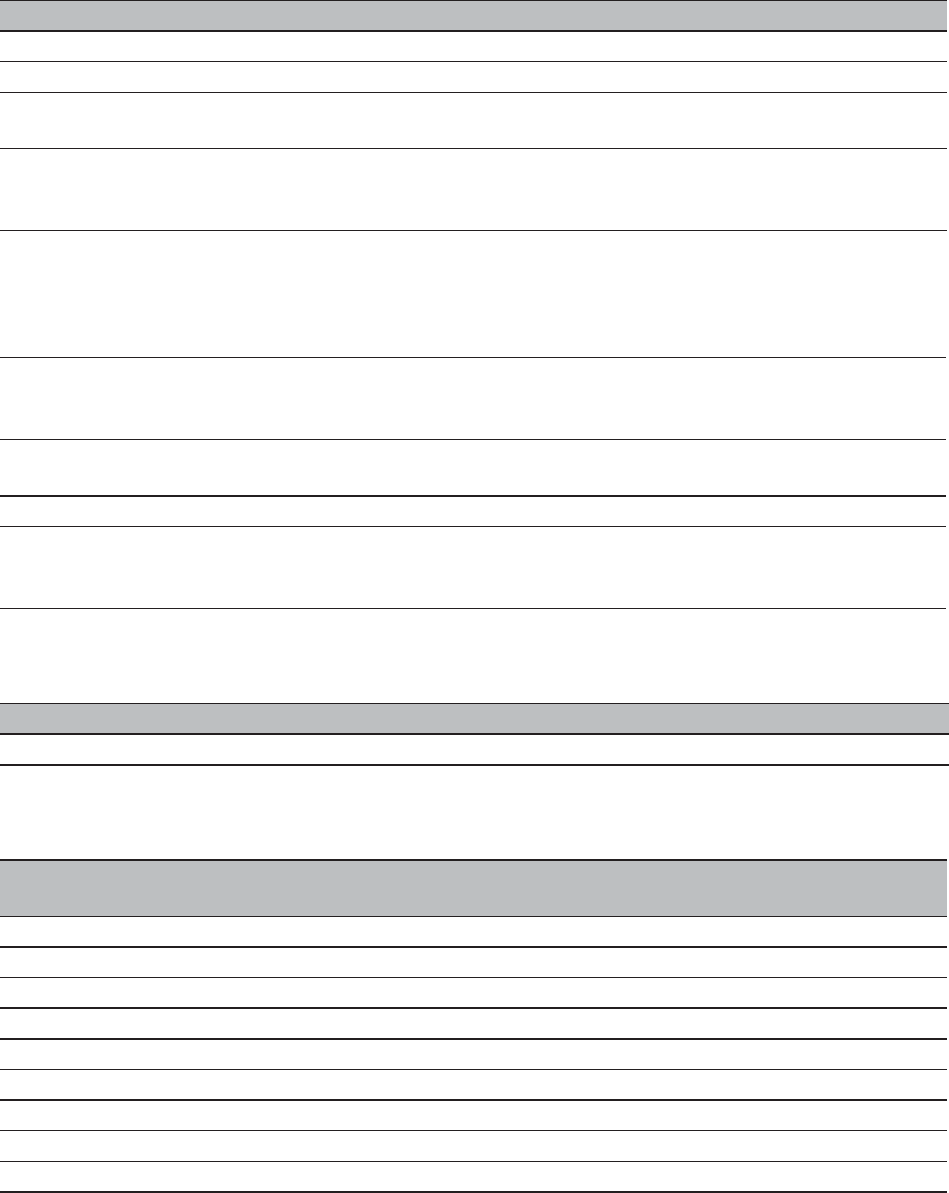
S1A31526 - Draft
- 8/2010 69
Stability
Radio standards
Network range
Power consumption/power output
Stability
Vibration IEC 60068-2-6 Test FC test level according to IEC 61131-2
IEC 60068-2-64 test level in accordance with EN 50155:2001+A1:2002
Shock IEC 60068-2-27 Test Ea test level in accordance with IEC 61131-2,
EN 50155:2001+A1:2002
Shock resistance
TCSNWA2A1
IEC 60079-0 chap. 6.2
Shock resistance test with 1kg mass dropped from 0.7 m
Housing cover only removeable with tool
EN 300 328 Electromagnetic compatibility and radio spectrum matters (ERM) -
bandwidth transfer systems - data transmission equipment operating in
2.4 GHz ISM band and using spread spectrum modulation technology
EN 301 893 Broadband radio access networks (BRAN) - 5 GHz high-performance
Remote Local Area Network (RLAN)
EN 301 489-1 Electromagnetic compatibility for radio equipment and services
EN 301 489-17 Electromagnetic compatibility (EMC) for radio equipment and services -
specific conditions for 2.4 GHz wideband transmission systems and 5
GHz high-performance RLAN equipment
TP port
Length of a twisted pair segment max. 100 m / 328 ft (cat5e cable with 100BASE-TX)
Device Power
consumption
Power output
TCSGWA272 10.0 W 34.1 Btu (IT)/h
TCSGWA242 10.0 W 34.1 Btu (IT)/h
TCSGWA242F 10.0 W 34.1 Btu (IT)/h
TCSGWC241 10.0 W 34.1 Btu (IT)/h
TCSNWA241 10.0 W 34.1 Btu (IT)/h
TCSNWA241F 10.0 W 34.1 Btu (IT)/h
TCSNWA271 10.0 W 34.1 Btu (IT)/h
TCSNWA271F 10.0 W 34.1 Btu (IT)/h
TCSNWA2A1 10.0 W 34.1 Btu (IT)/h
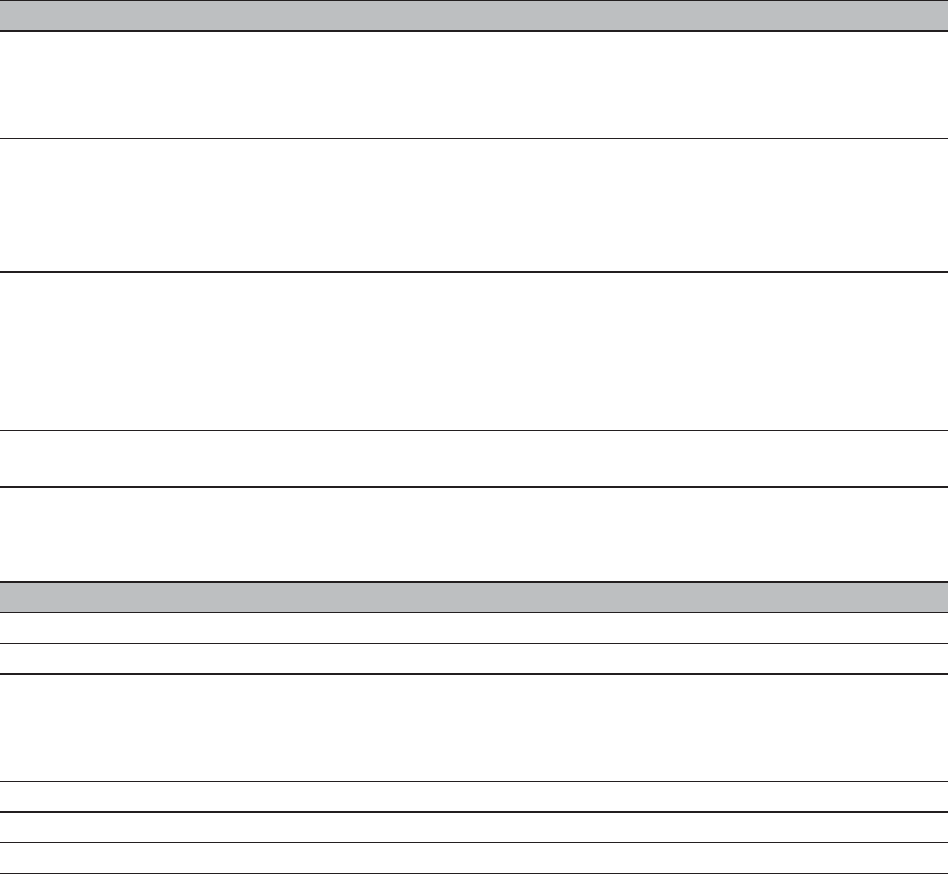
70 S1A31526 - Draft
- 8/2010
Scope of delivery
Accessories
Note: Products recommended as accessories may not have the same
environmental and performance characteristics as the ConneXium WiFi
devices.
Device Scope of delivery
ConneXium
WiFi
Device
Quick start guide in German and English
CD ROM
50 Ohm connector
TCSGWA272,
TCSNWA271,
TCSNWA2A1,
TCSNWA271F
additionally
Adapter cable for serial interface, M12, 4-pin, plug -> SubD 9, socket
M12 plug shielded for Ethernet interface
M12 plug unshielded for power supply connection
TCSGWA242,
TCSGWC241,
TCSGWA242F,
TCSNWA241,
TCSNWA241F
additionally
Adapter cable for serial interface, miniDin, socket -> SubD 9, socket
Two 3 dBi dipole – dual-band antennas
TCSNWA…
additionally
Three 3 dBi dipole – dual-band antennas
Designation
TCSWAMCD Memory Back-up Adapter for M12 connection
TCSWAMC67 Memory Back-up Adapter for miniDin connection
TCSWABMK Set for fastening TCSGWA272, TCSNWA271, TCSNWA2A1,
TCSNWA271F devices to pole,
maximum permitted wind speed 220 km/h (136 mph),
permitted pole diameter 39 mm to 60 mm (1.54 in to 2.36 in)
Adapter
TCSWABP Lightning protection adapter m-f
Terminal cable Adapter cable for serial interface, M12, 4-pin, plug -> SubD 9, socket
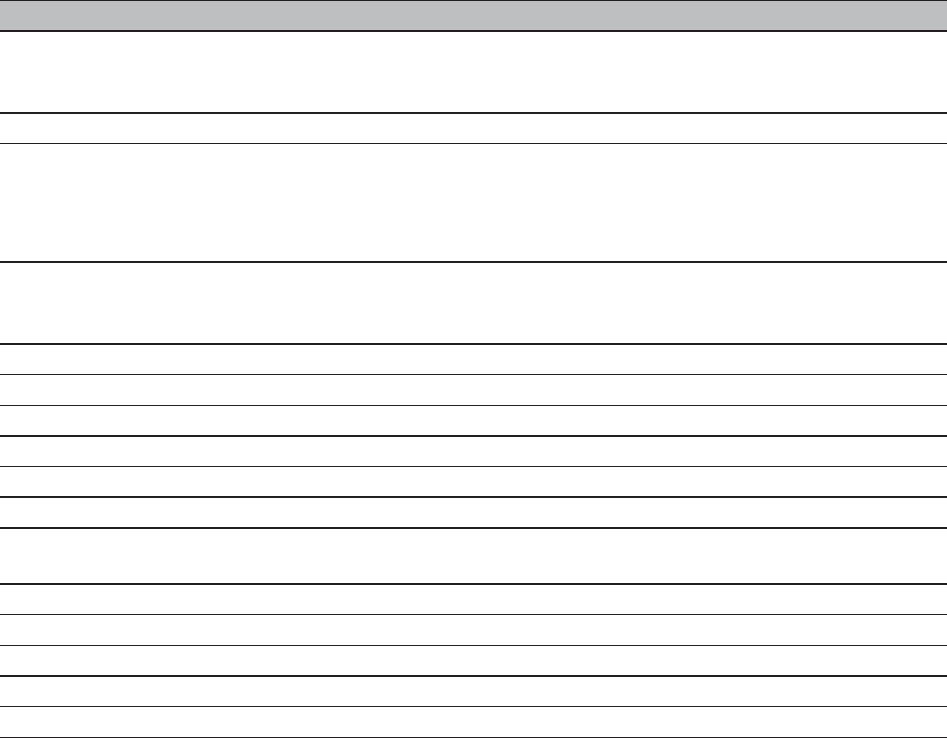
S1A31526 - Draft
- 8/2010 71
Underlying norms and standards
Name
72/245/EWG, 2006/28/EG Directive on radio interference (electromagnetic tolerance) for
motor vehicles.
Certified devices are marked with an e1 type approval indicator.
EN 50155:2007 Railway applications - electronic systems in railway vehicles
EN 55022:2006 + A1:2007 IT equipment – radio interference characteristics
EN 60079-15 Electrical equipment for explosive gas atmospheres – part 15:
Construction, testing and marking of protection type "n" electrical
apparatus.
EN 61000-6-2:2005 Generic norm – immunity in industrial environments
EN 61131-2:2003 Programmable logic controllers
FCC 47 CFR Part 15:2009 Code of Federal Regulations
IEC/EN 60950-1:2006 Safety for the installation of IT equipment
IEEE802.3af Power over Ethernet
IEEE 802.1 D Switching, GARP, GMRP, Spanning Tree
IEEE 802.1 D-1998 Media access control (MAC) bridges (includes IEEE 802.1p
Priority and Dynamic Multicast Filtering, GARP, GMRP)
IEEE 802.1 Q Tagging
IEEE 802.1 Q-1998 Virtual Bridged Local Area Networks (VLAN Tagging, GVRP)
IEEE 802.1 w.2001 Rapid Reconfiguration
IEEE 802.3-2002 Ethernet
IEEE 802.11a/b/g/h/i/n WLAN
Table 17: List of norms and standards.
Certified devices are marked with a certification indicator.